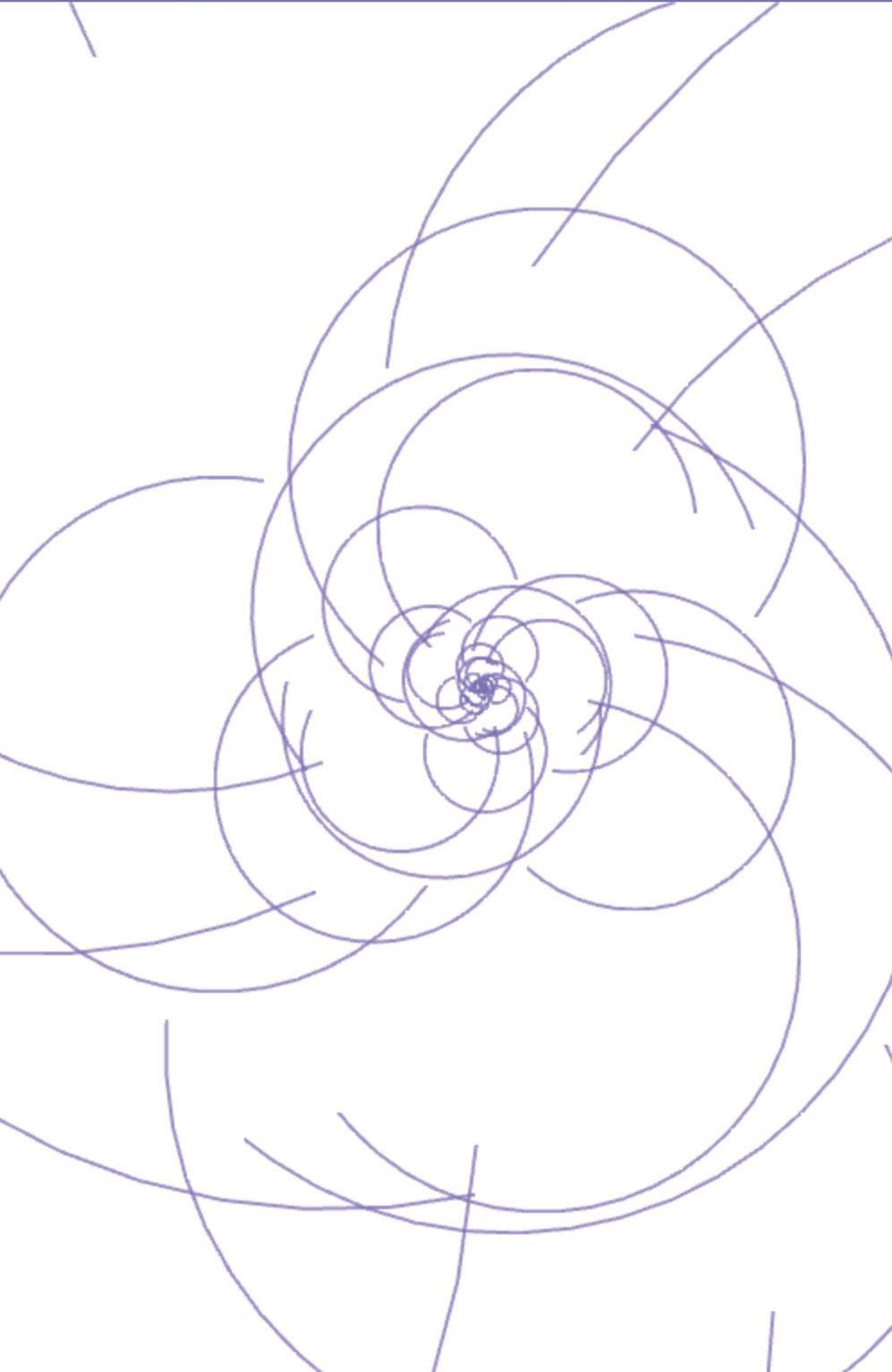
30 minute read
York University Digital Media Year in Review 2019 - 2020
This catalog highlights of some of the best and most innovative work created by Digital Media students at York University from Fall 2019 through Winter 2020. In a typical year we hold two large events, one on campus and one off campus, to feature student works. However, this year this was not possible due to the disruption caused by the COVID-19 pandemic. The selection of works in this catalog are representative of students from across our program, ranging from years one through four of the Undergraduate program. The works presented here are in a wide variety of mediums and formats. From webbased, to electronic, to mixed reality, the common thread to most of these works is the computational basis in their conceptualization and realization. Most of the works presented here use content that is generated in real-time using algorithms as their creative toolset. All of the works embody computational thinking and aesthetics in their execution that include systems-based methodologies, hybrid art, and interdisciplinary approaches to making art. Digital Media is a joint program between Computational Arts (School of Arts, Media, Performance, and Design) and Electrical Engineering and Computer Science (Lassonde School of Engineering) that mixes arts and media with engineering. In the program students use code and programming as tools for creative expression in forms such as immersive and 3D environments, interactive performance, data visualization, games and apps.
LiWei
Advertisement
Vladislav Luchnikov, Yuzhen Luo, Yibai Tan, XiCheng Lian, Hao Tang
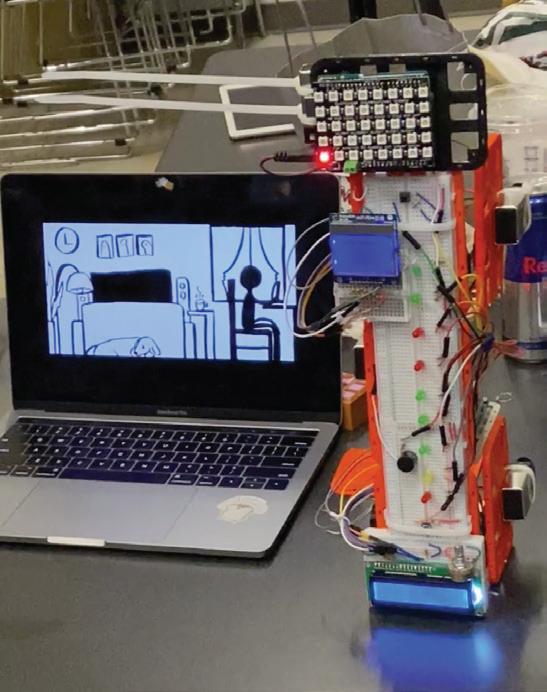
The project is inspired by the Hong Kong’s no longer existing Kowloon Walled City and its graphical cross-section representation created by a group of Japanese researchers at the end of the 90’s.By using LCD screens and LEDs on a tower-like physical structure we are attempting to look inside of a building and see its inhabitants - how they live, how they move. The idea of transferring movement between physical and virtual depth domain is explored here by tracing a person’s location - first on an LCD screen (virtual space), then LEDs (real space, hidden) back to LCD. The tower is an attempt of creating an autonomous object which has a feeling of ‘life’ in it. The top LED matrix part was added to emphasize the towerness referring to the bright head parts of slim towers seen in big Aisan cities often featuring big antennas. The open visible wire structure and tower’s internals add to the feeling of ‘seeing-through’ the building.
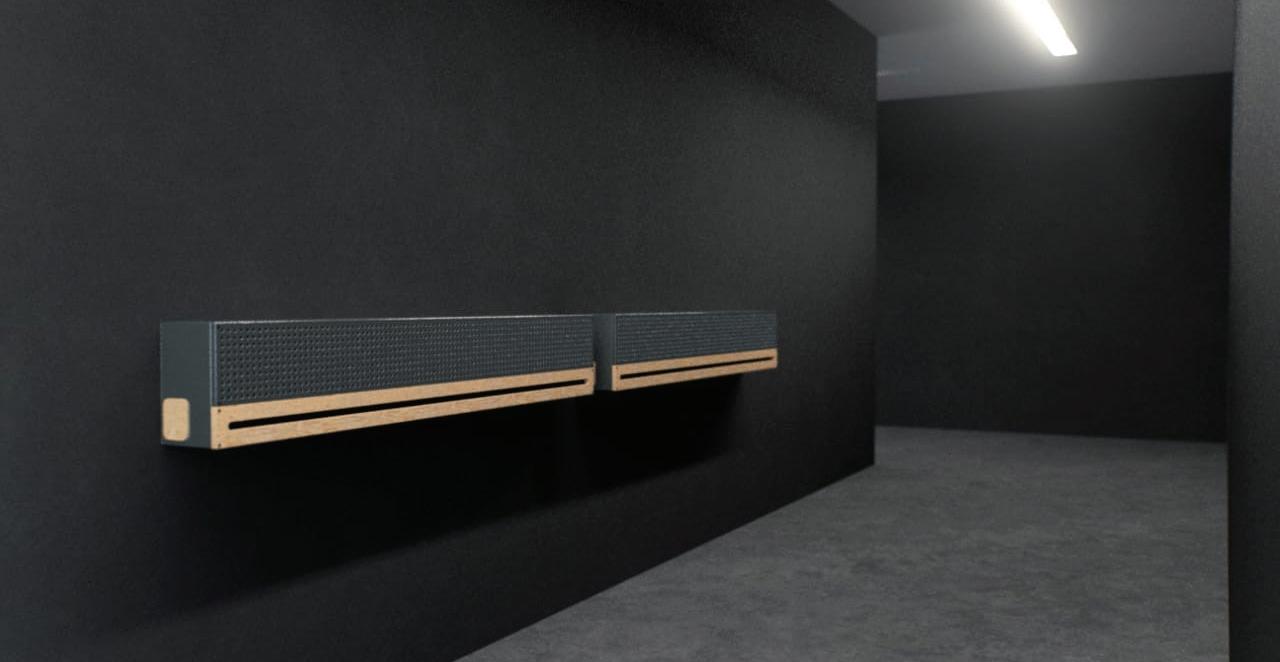
Passers By
Vladislav Luchnikov, Kelvin Luk, Hawke Fitzmaurice, Yu Fujishiro
Passers By is an interactive public installation allowing passers-by to connect with cold, unwelcoming spaces, temporarily emerge from the unstoppable stream of thought and feel comfort. ‘Encouraging observation’ is the motivation behind the project as we believe that lack of curiosity, in part, increases levels of stress and loneliness in the city dwellers. Passers By is an attempt to use technology not as a wordy output but rather as a tool to generate emotion, empathy. As a secondary task we hope that the piece can contribute to establishing non-verbal dialogue where space can become the connecting intermediary between strangers - this becomes more relevant as new social distancing rules fall in place encouraging people to seek non physical connection.
The installation is a bar of variable length which can be installed on a wall at a height of a person’s shoulder. The bar contains an array of speakers and an ultrasonic sensor strip. When a person walks by the sensor strip they hear a sound which shadows their movement - establishing an effect of ‘walking with the sound’. Depth reading is constantly updated and sent to a microcomputer (Raspberry Pi inside of the bar) which calculates a person’s location (relative to the bar). Once the location is recorded, the microcomputer dispatches the speaker system to play a sound back at provide an opportunity of a ‘dialogue’ between people by exploring tonal and phasing relationships of sounds that walk with them.
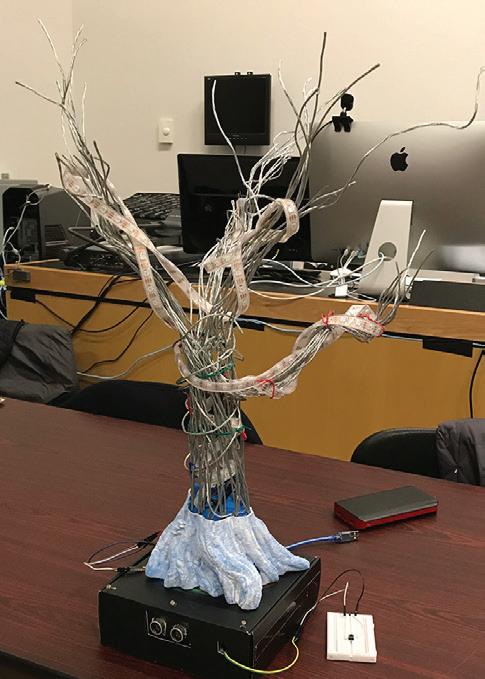
Forgotten Forest
Matthew Lucchitti, Yu Fujishiro, Catherine Lombardo
This piece is an abstract representation of the forests that were victims to clear cutting and deforestation. After a tree is cut down, only their stumps are left, which we show with our solid 3D printed model. The wires making up the rest of the tree are used to make a flimsy outline the viewer can see through. This is to create a “ghost image” of the tree that was taken away. The lights we used for our tree are meant to “bring the tree back to life.” The different cases we created for the lights are representative of the different “emotions” the tree has to humans interacting with it. The first case we created was “Anger.” The closer you get past that distance, the more the tree “feels” as if it is in danger. The second case we created was “Happy/Sad.” Trees provide essential resources for our survival (such as food and shelter) and create clean air through photosynthesis. We provide them some as well (such as carbon dioxide and fertilizers). The third and forth cases were less about the tree’s “emotions” and more about our attitudes towards and interactions with trees. The third case was “RGB Interactive,” where an individual would have to interact with the tree to get it to preform a function (in our case changing the colour of the lights), much like how human interactions do in some ways affect the survival, growth, etc. of trees. The fourth case was “Christmas,” which we created to remind us that we commonly tie symbolic meaning to trees, showing that they are also important to us spiritually as well as physically.
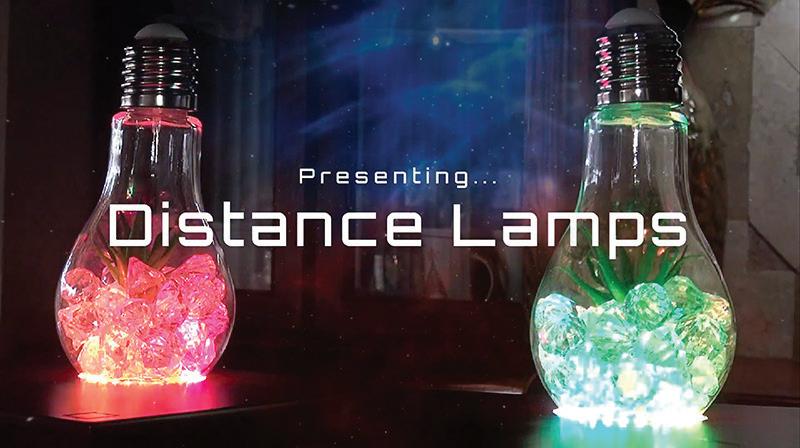
Distance Lamps
Jason Sankhar, Matthew Leong, Edmond Diep, Arujen Segar
Imagine you and a loved one are moving away from each other, you promise to text, call, video chat whenever you are available. What about the times when you aren’t? What happens when you wish you could feel the presence of one another. Now imagine you have these lamps, Distance Lamps. You have one and your loved one has the other. Distance lamps provide a way of conveying emotion through colours with the touch of a button. You can wirelessly turn on your loved one’s lamp from anywhere in the world as long as you are connected to WiFi. The purpose of having this external button built into the lamp instead of having one within the dedicated app is so that you and your loved one know that they are thinking of you because they have to physically touch the lamp in order to turn the opposing one on. In terms of the app you can control the RGB colours, brightness and you can even toggle through preset colour modes. This generation has given in to these tiny screens we call smartphones that supposedly hold the world within them, these lamps will make us realize what it is really like to put effort into somebody.
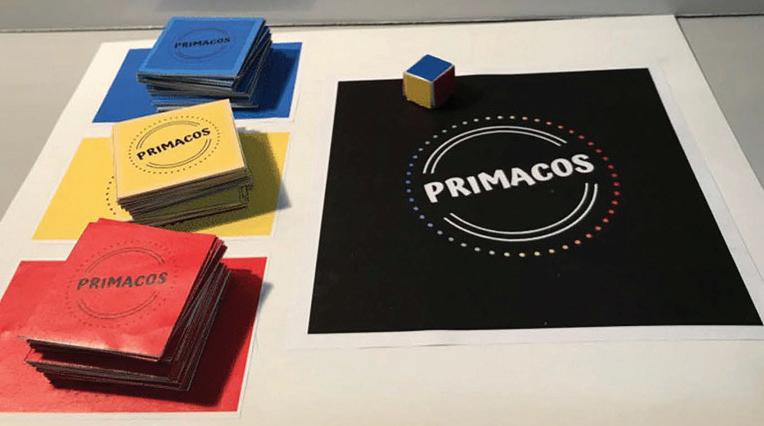
Primacos
Antonia Sinn
Primacos (pronounced pree-mah-kose) is a card-based interactive game where players draw from different coloured decks and yell out different items/subjects based on what is listed on the card. The game can be played by 2+ players, and the wide variety of topics listed on the cards allow for everyone to participate.
There are three different decks, coloured red, blue, and yellow, and depending on what colour is rolled with the dice, cards are drawn to the corresponding colour. Each card has a different topic, and every player must go back and forth and yell out something that relates to the topic until the timer runs out.
Every round, a player collects card(s), depending on who the play is on when the timer runs out. The winner is determined by a process of elimination. Players lose when they lose all 5 lives, and the last player to lose their 5 lives wins.
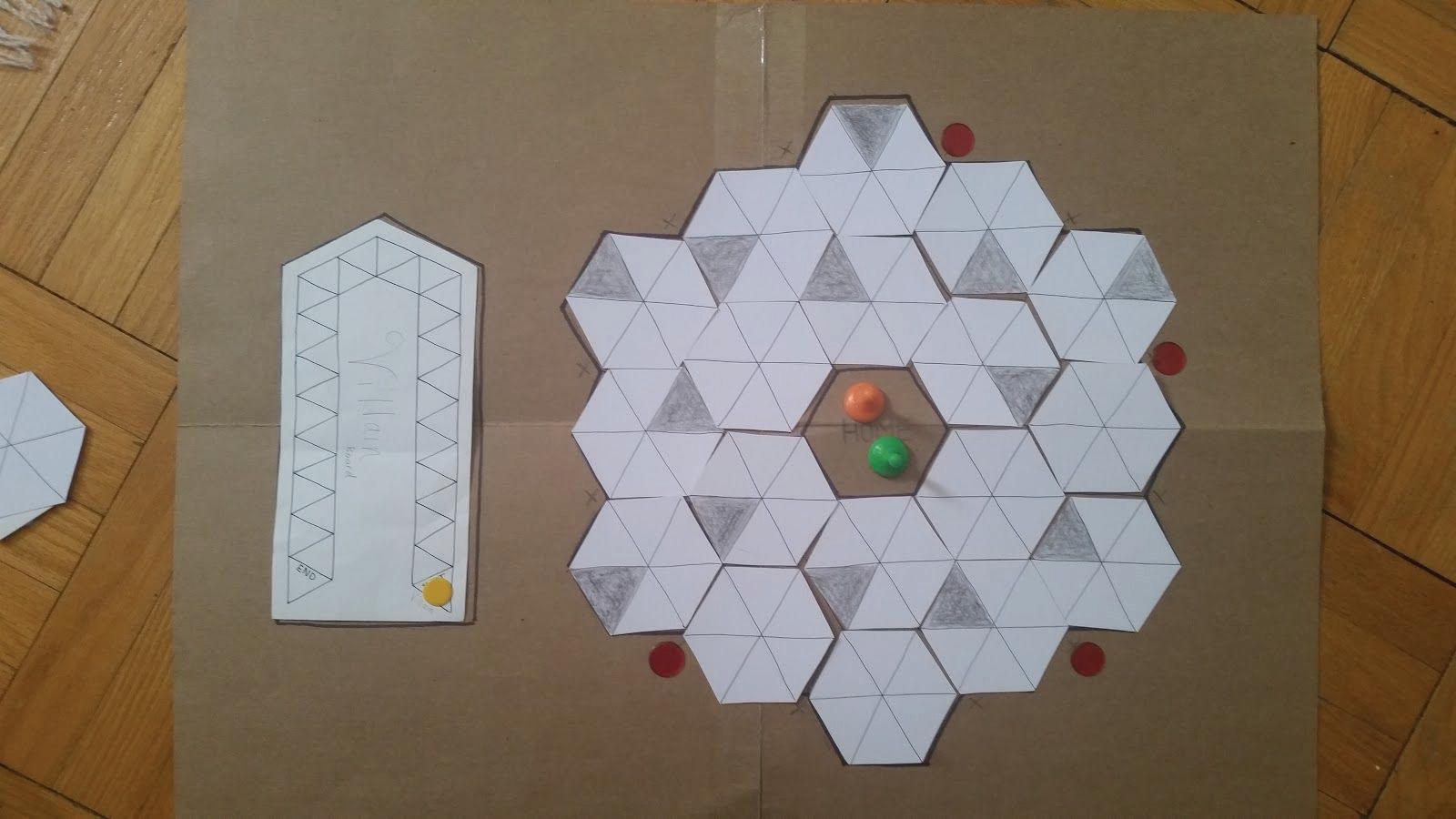
Private Eye
Catherine Turuta
A criminal is on their way to escape the country and their chances of being arrested before they escape depends on the detectives working together to collect all evidence that may incriminate the criminal. The goal of the game is to work together as detectives to collect all the evidence pieces and bring it back to the home base before the criminal manages to successfully leave the country. This is achieved by rolling the dice and moving around the board to collect the evidence chips and bring it back to the home base before the criminal manages to make it to the end of their board.
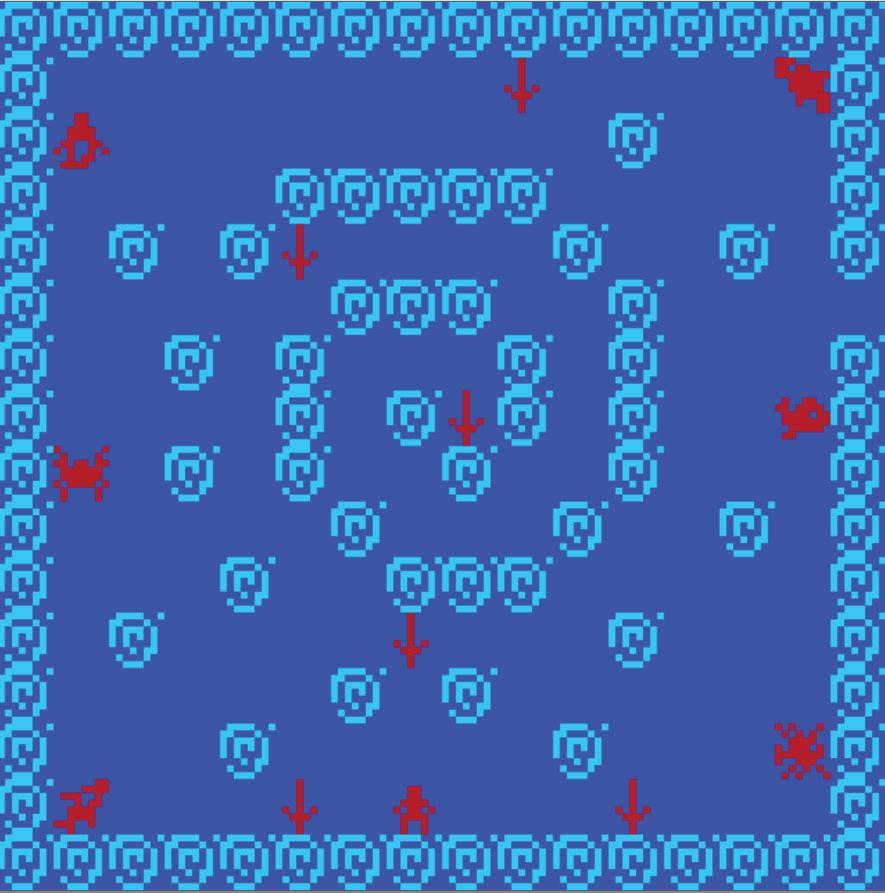
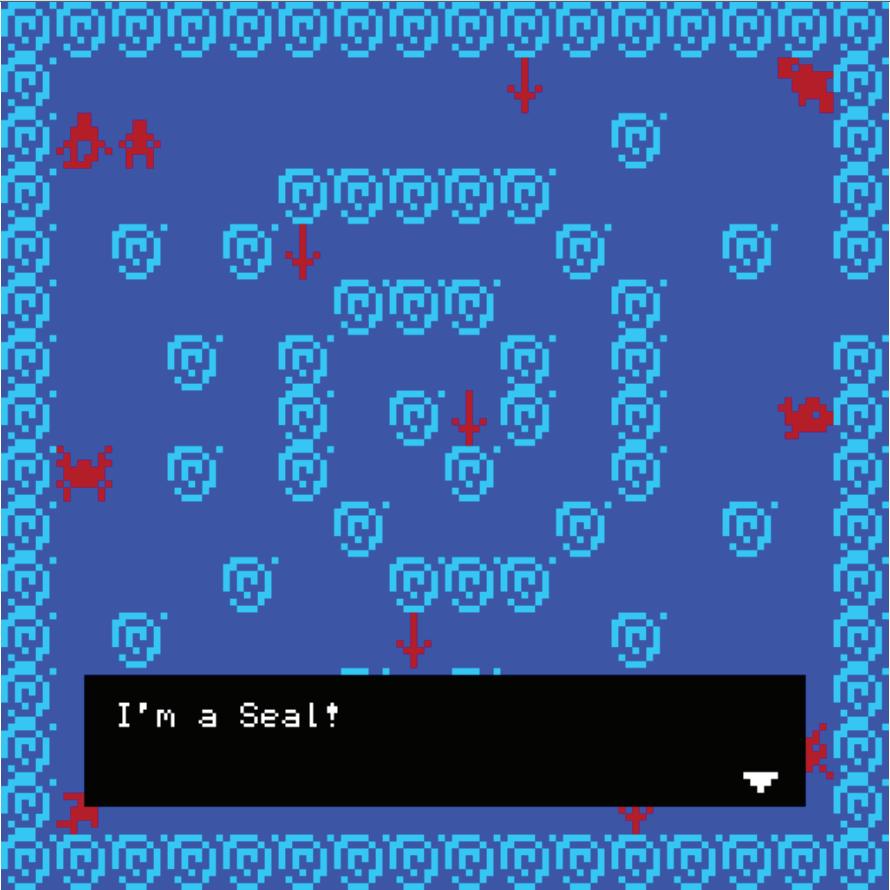
Marine Mayhem
Jonathan Singh
A dice-based board game, where players would pull cards every turn to fight sea creatures, using dice to roll damage and make ability checks. The game theme consisted of a sea-based environment, where the player would draw enemy sea creature cards to engage in combat with them in order to progress. The original story behind this game was that the player would be a human, that would enter a sea environment and wipe out the population, and the player would be a villain of sorts for the entire game, but this would only be revealed at the end. This is a digital version of the game made in Bitsy.
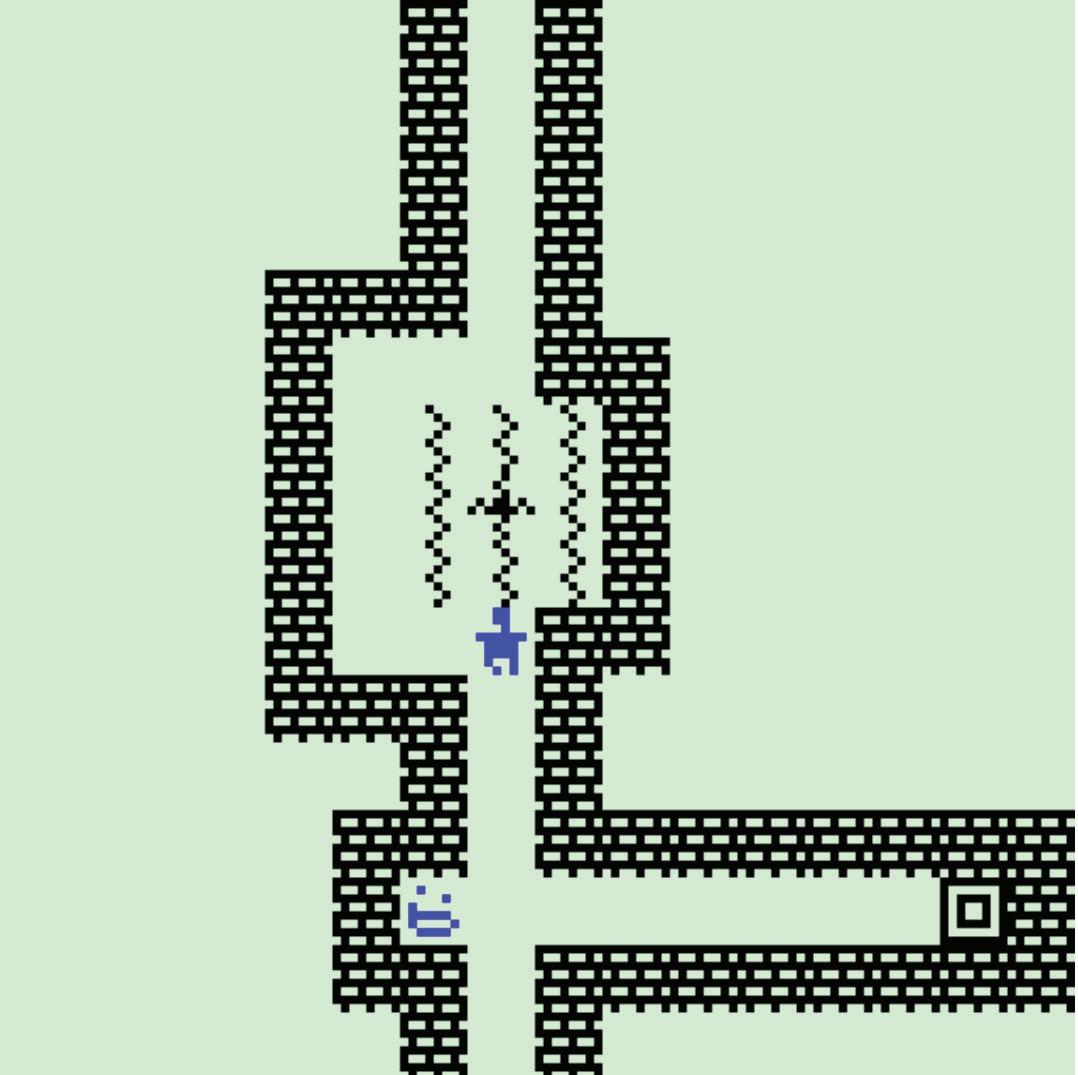
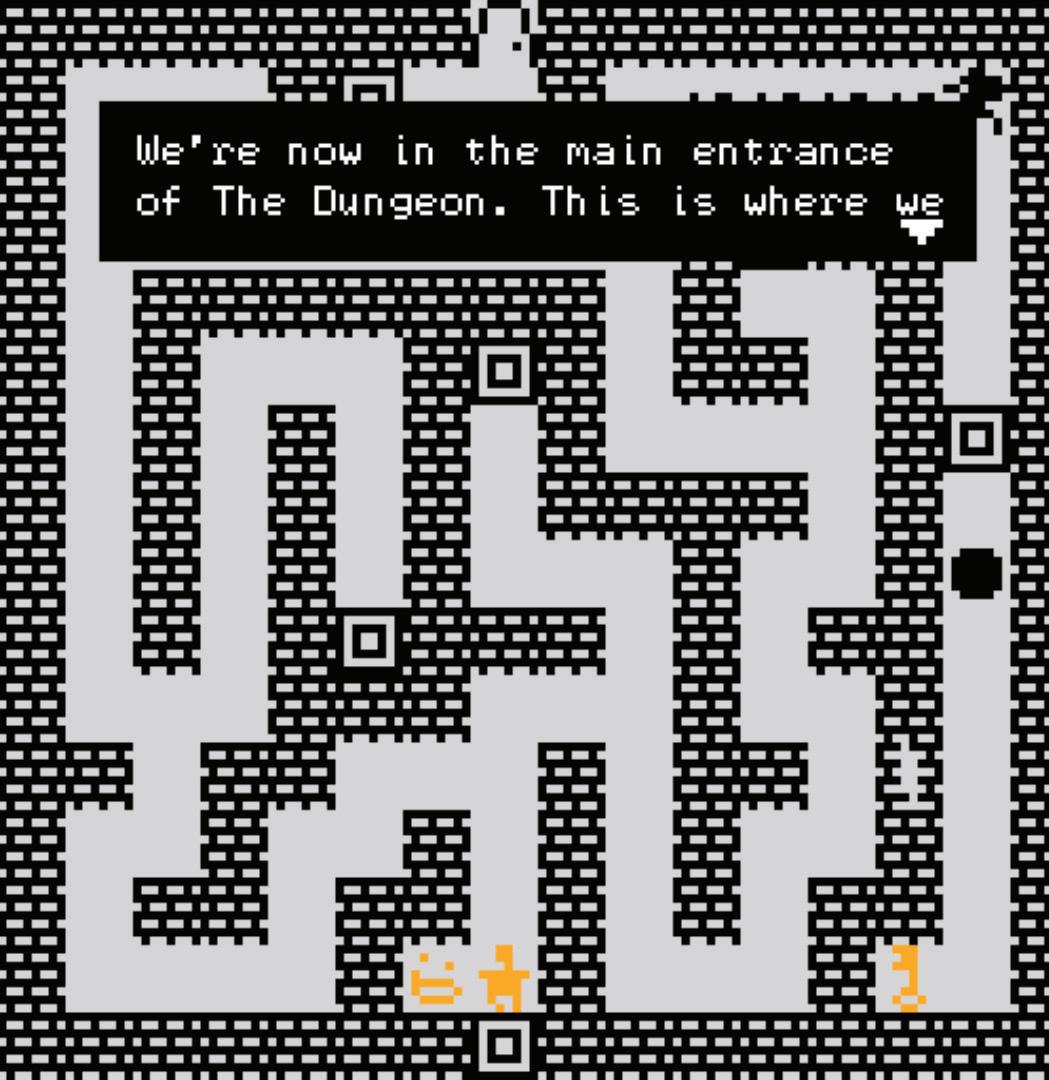
Dungeoneers
Daniel Doris
Dungeoneers is a 2-5 player game in which all the players explore a futuristic dungeon. One player however will take on the role of the Dungeon Master (DM), who will be designing the dungeon rather than exploring it. Using the variety of trap types at their disposal, the DM will fill its dungeon with dangers and try to eliminate the Dungeoneers before they can escape. This is a digital version of the game made in Bitsy.
Game is playable at: https://danield2.itch.io/dungeoneers
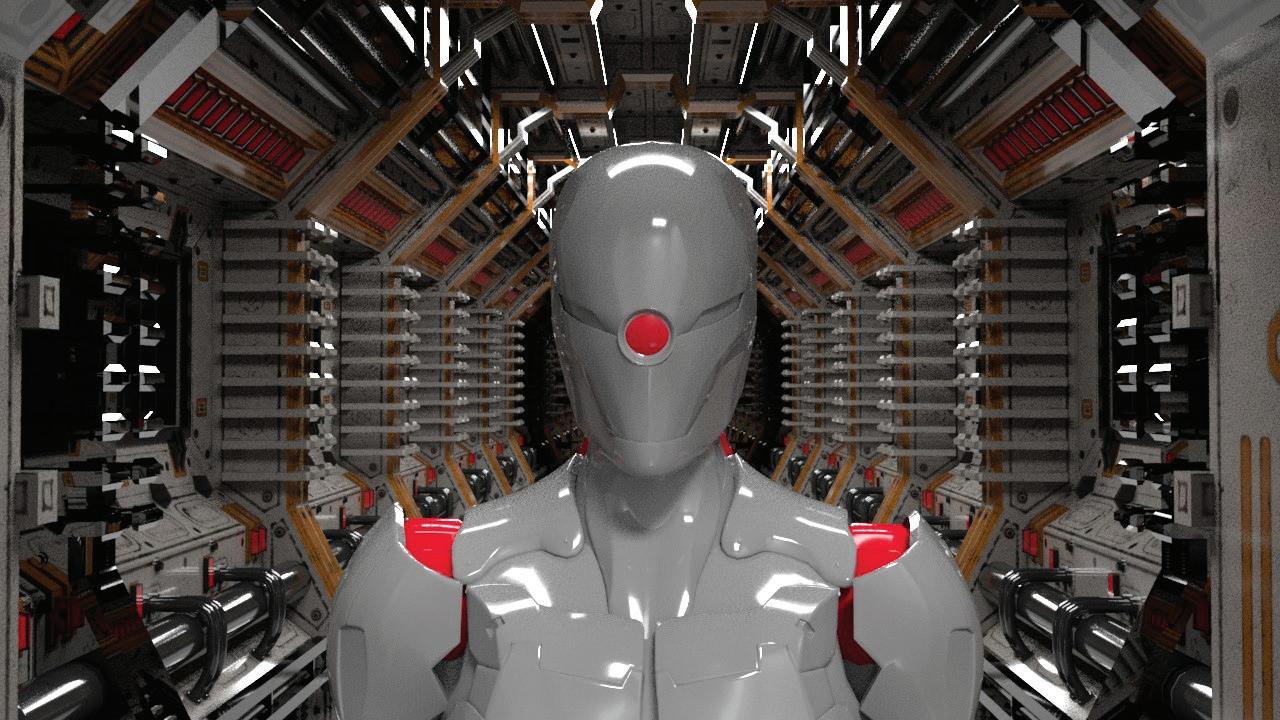
VOID
Eyad Tawfik
Laboratory experiment 727 explores an eerie laboratory to test out a new prototype of a portal gun. 727 walks through the hallway towards the lab. Perhaps test 727 will prove to be the final one…
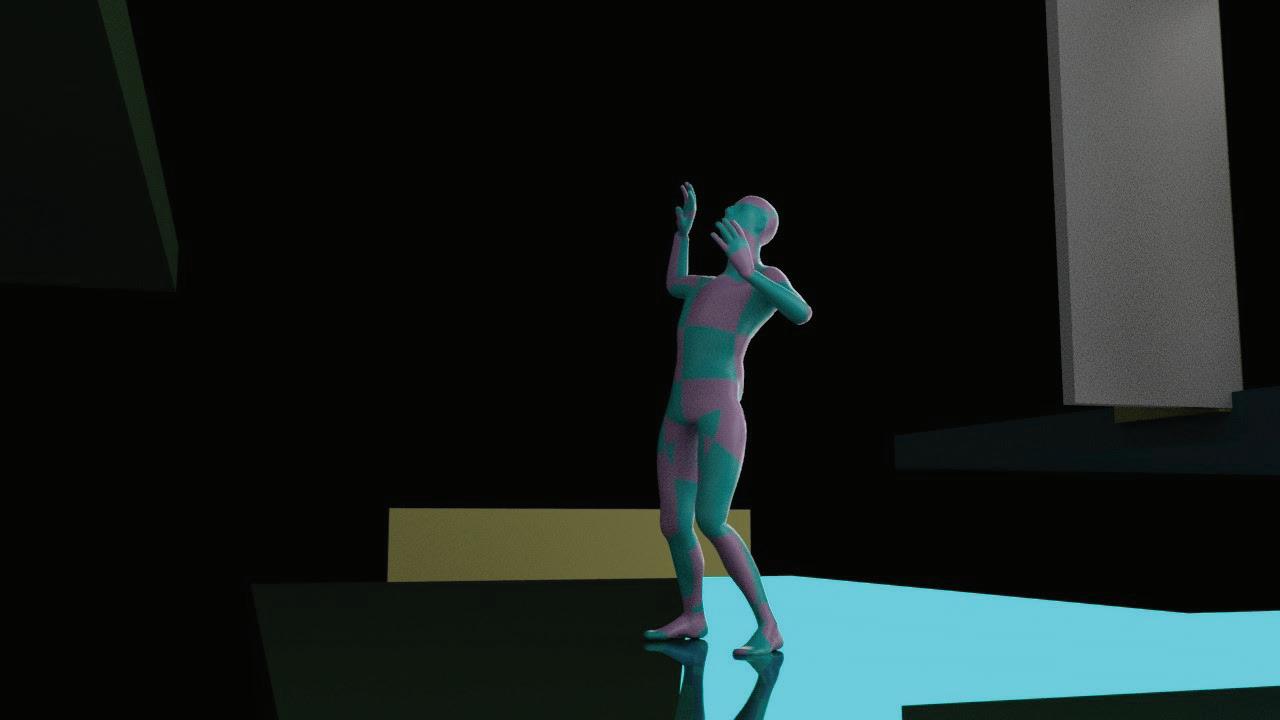
Why Me
Jodie Chow
Coming from a strong life science background, I wanted to challenge my creative ability that I have always pushed aside throughout my life. With this project, I decided to create something representative about a part of the human journey. My take on this story centers around the race to become someone with purpose while going through the rigorous challenges of society. This character shows the continual search of who you are, whether it be gender, your worth, your personality or something that adds value to your life. In addition, the objects represent that throughout your life you will always reflect back on who you want to become and how much progress you have made. The tone of this setting, including the audio, represents the unsettling feeling that you are only a small piece in this large and growing universe. Although we don’t fully understand the world around us, I wanted this project to express that by examining our own thoughts and feelings we can try to understand who and where we want to be in this life.
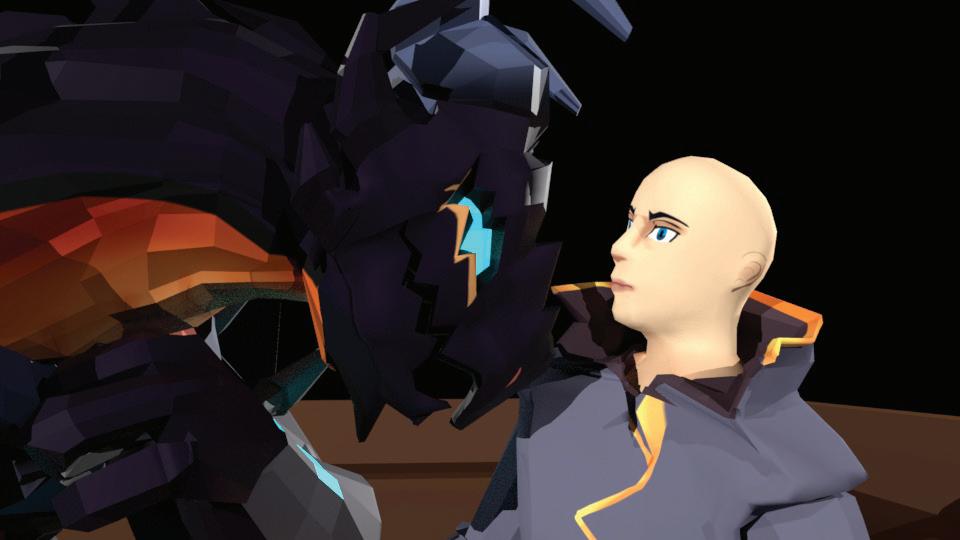
The Way I See it— A Beetlejuice: The Musical Animation
Mia Meneses-Sandoval
A monstrous being attempts to strike up a conversation (and friendship) with a girl, in the form of song. The scene is set to the Beetlejuice: The Musical song, “Say My Name.” Originally, I made a 1 minute-long storyboard, and intended to use it as basis for a 2D animation in my personal time—but a week after finishing my 2D storyboard drafts, I needed to begin working on a storyboard for a 3D Animation Final Project. With permission, I decided to use my personal work to adapt to 3D instead. I wanted to make the movements as exaggerated and bouncy as a 2D cartoon while using the advantages of 3D software, such as inbetweening the leaps and bounces automatically, creating dramatic angles without perspective issues (fixing the issues of uninteresting framing from the original 2D storyboard), and the freedom to adjust timing. The monster commanded the most attention with its difficult model and energetic presence—so I devoted the more to its build and animation over a detailed background or supporting character.
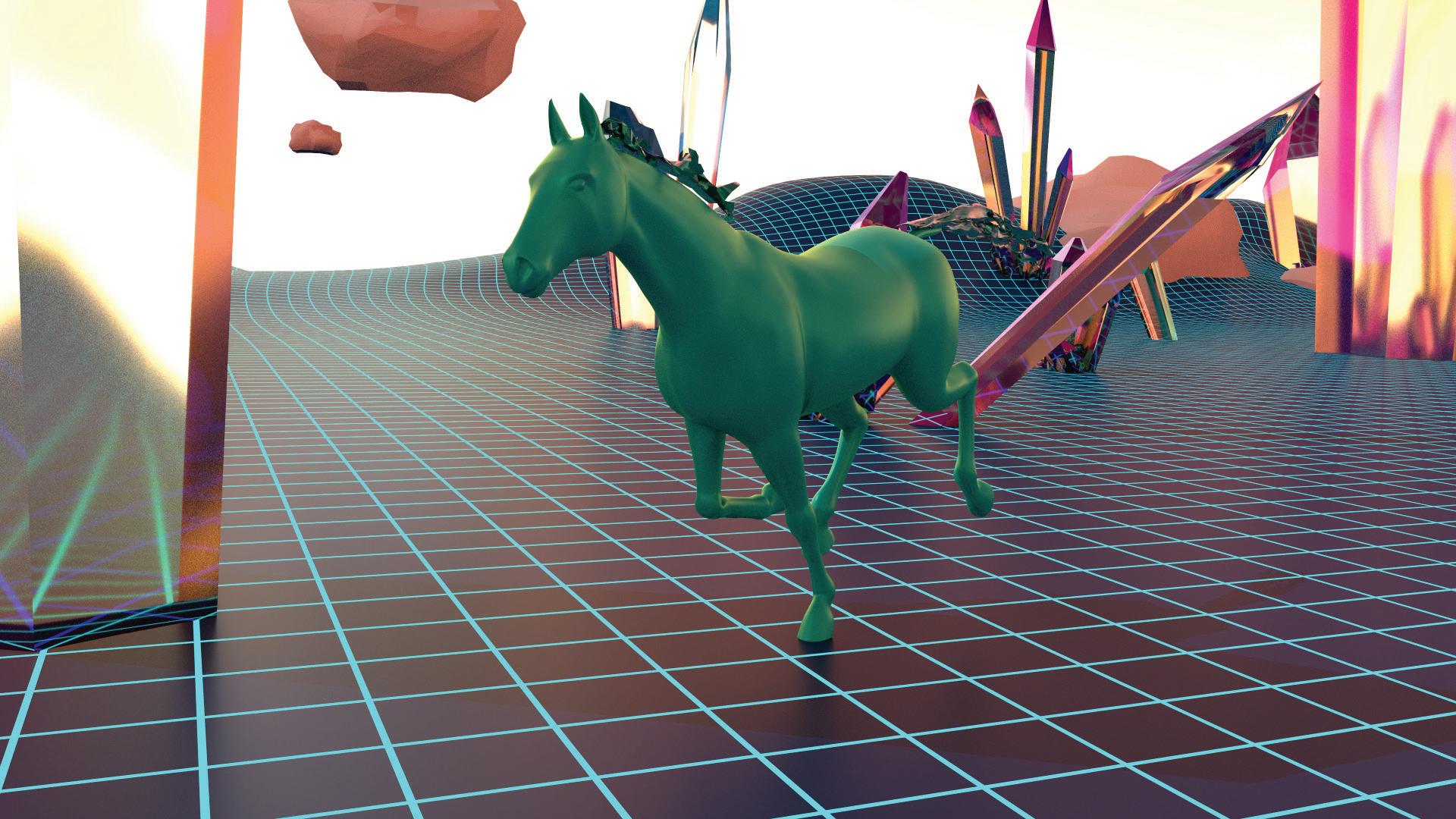
Lucid Space Disco
Sofia Valyaeva
Space Horse makes its way through crystalline surroundings in exploration of materials, atmosphere, and physical possibilities of 3D Digital Art. The saturated colours paired with music aims to take you into the hyper ambiance of familiar ‘80s nostalgia. Using beginner knowledge of the Maya program, this project shaped itself through errors reworked into stylized features. The default neon appearance of pre-rendered shaders and wire mesh inspired the final retro-synthwave aesthetic. Time constraint and technical difficulties guided this project to explore an abstract premise over a story-based one. The abstract crystal environment substitutes the classic neon lights of the ‘80s aesthetic by amplifying and tinting the light and surroundings. The polygons of the ground worked themselves into the glowing net inspired and paying tribute to the light-grid of classic ‘80s video games, posters, and graphic design. The ‘80s was a decade of Futurism, colour, geometric shapes and over-the-top patterns and silhouettes. The force of a horse’s running body pairs with the loud sound and visuals that aim to spread that same upbeat energetic positivity. Music: Night Ride by Aries Beats.
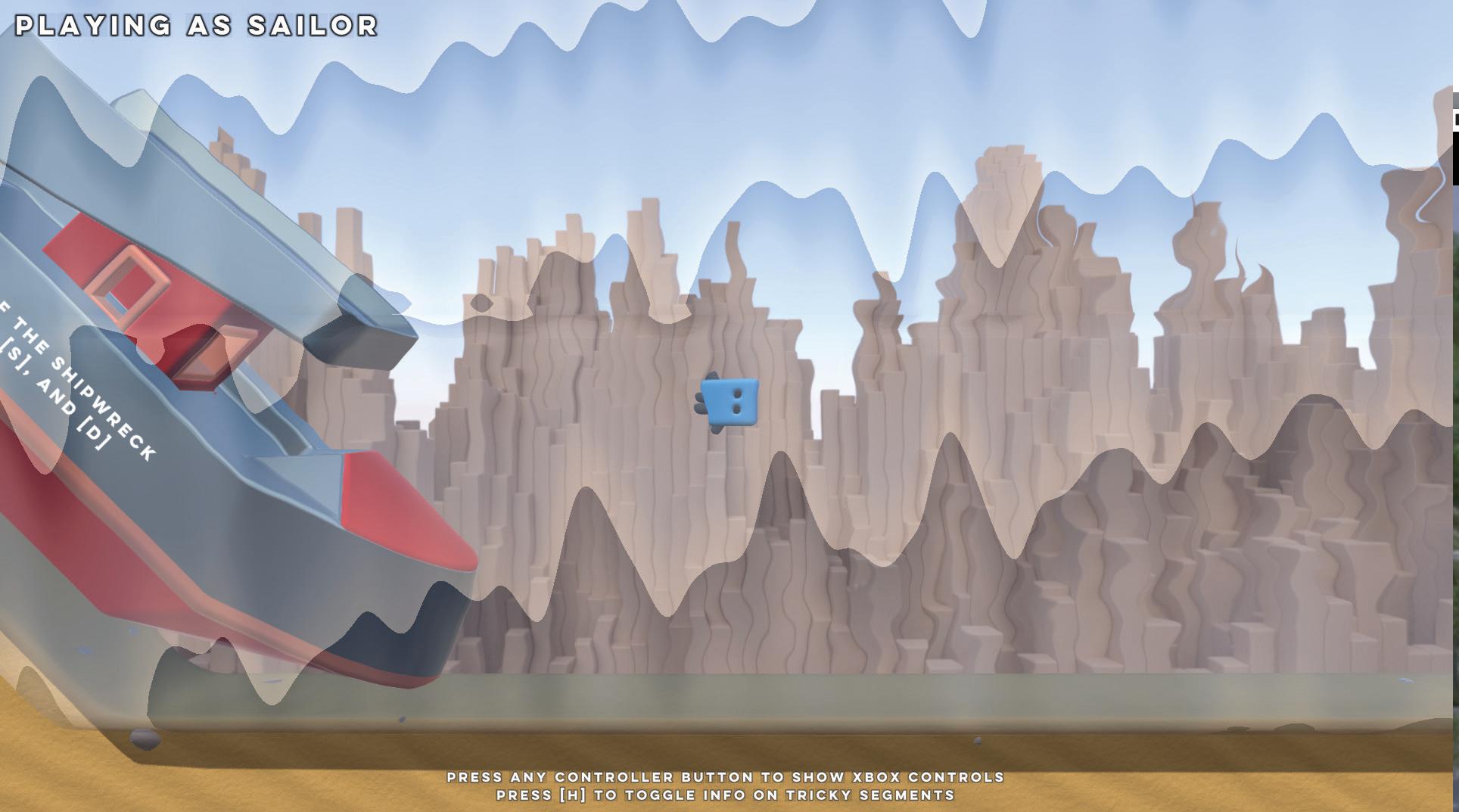
Despina
Juan Callejas
Despina is a tricky platformer where you must navigate a city full of hazards, but the game plays very differently depending on which of the two characters you decide to play as.
The game is a simple platformer in which the player must get to the end of the level without touching any hazards while collecting any bonuses they find along the way, though before they get a chance to even start the game, they must make one important decision. Despite the level layouts never changing, the game will appear differently depending on how one enters the city. Certain paths will be more accessible depending on how you enter the city, while some will become more treacherous.
Game link: https://theshadycolombian.itch.io/despina
Trials of Perinthia
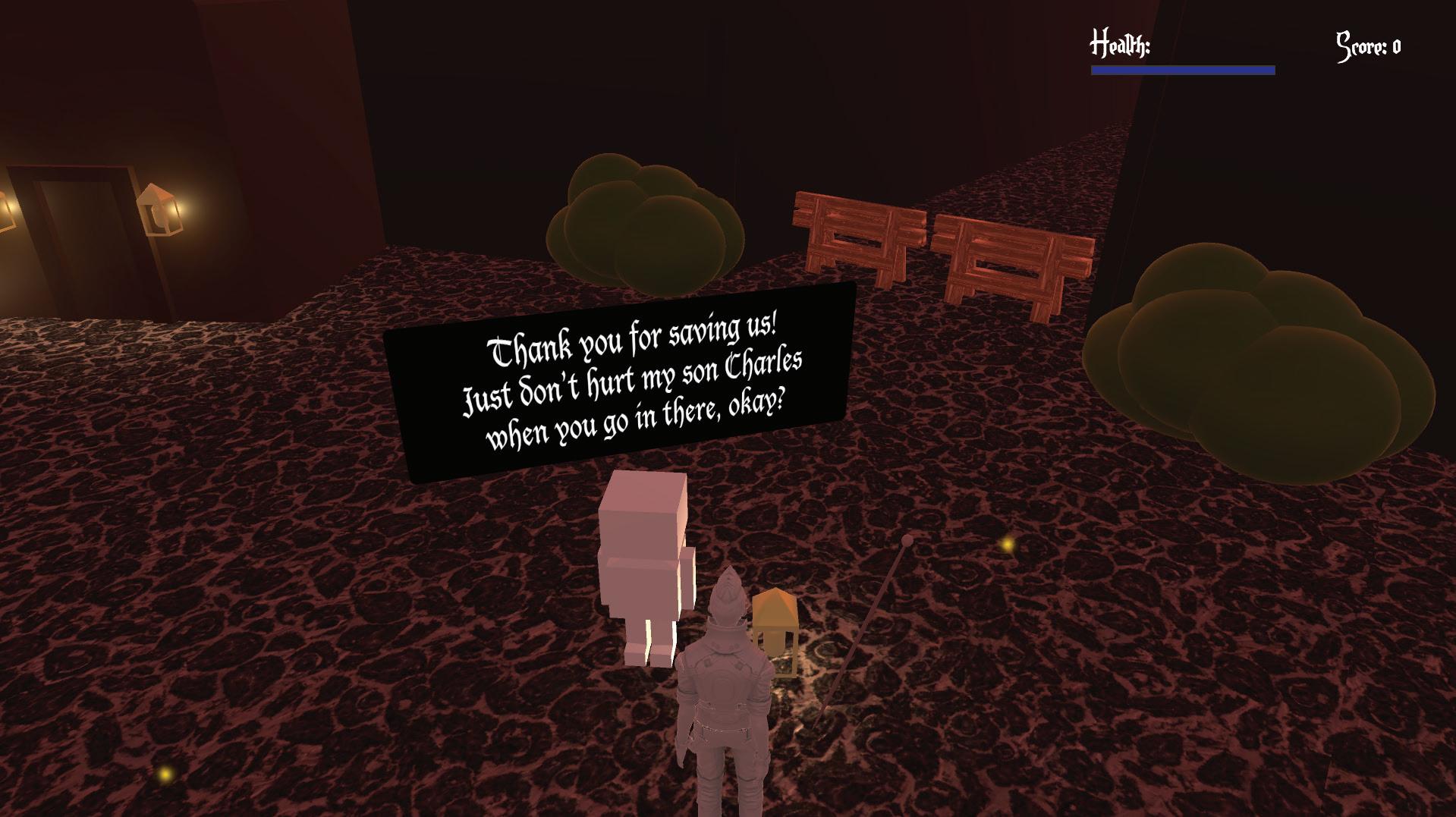
Kristen Grinyer
Trials of Perinthia is an action-adventure game set in the magical, medieval, plagued city of Perinthia. Players play as a young traveller looking for a new home, but ending up twisted in the afflictions of a mysterious city. It seems the city and its citizens have been cursed with deformities, the children so much so that they only show their faces at night and attack anyone in their eyesight. Players must travel through the 12 neighbourhoods while battling the mutant children to collect pieces of an effigy that when put back together will reveal what happened to Perinthia.
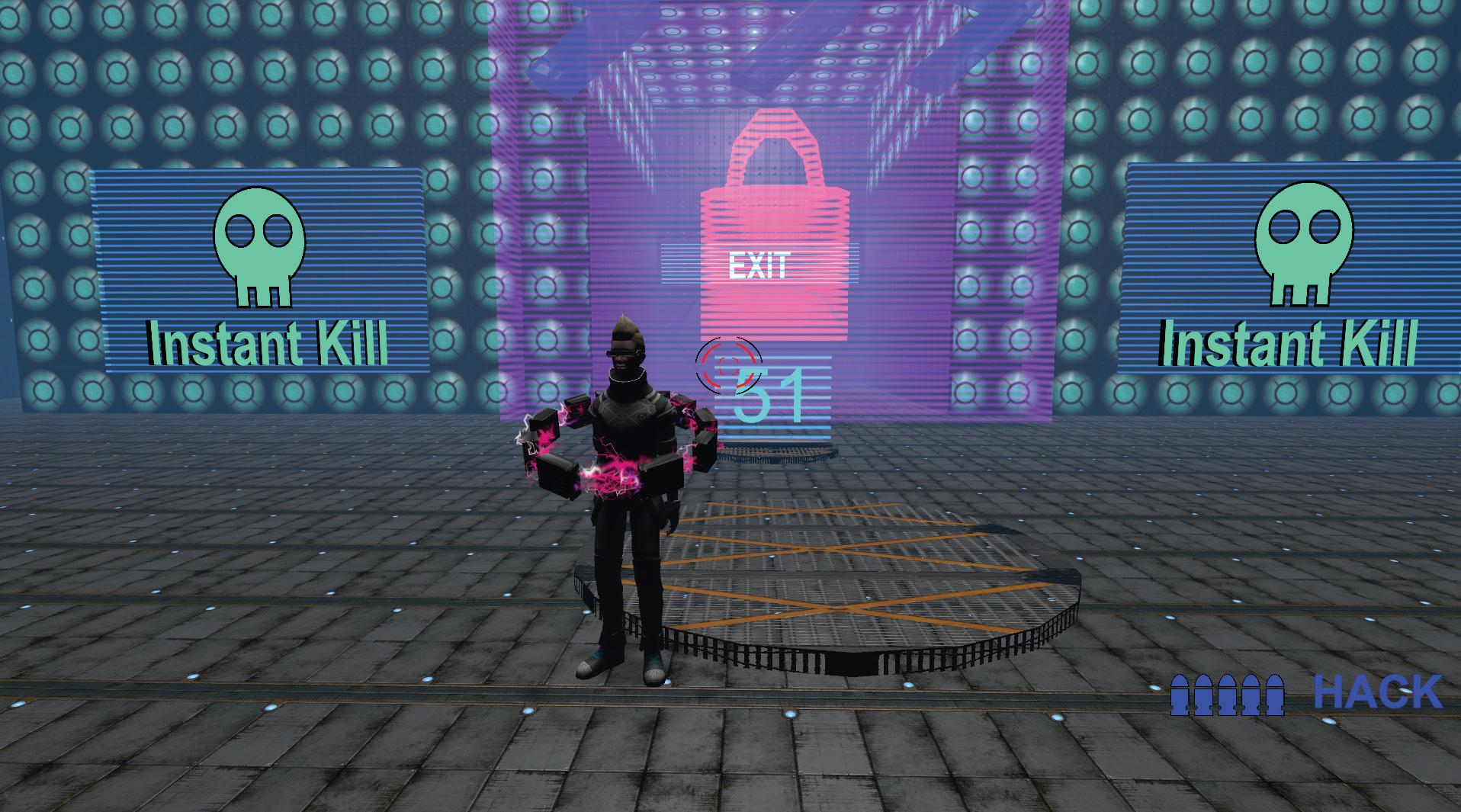
Eyes on Me
Yodhin Singh
Eyes on Me is a third person puzzle-platformer game. The goal of this game is to solve the 3 puzzles so that the exit door is unlocked and the player can escape the prison that they are trapped in. The game takes place in a futuristic cyberpunk environment and so, even in the prisons there are bright neon-like lights everywhere and everything is automated, including security systems. Using an advanced tech gun, the player can modify the state of various objects –states such as the size, speed and their on/off switch– that will help him accomplish his goal of escaping.
Video link: https://youtu.be/SSXkozDO0tE
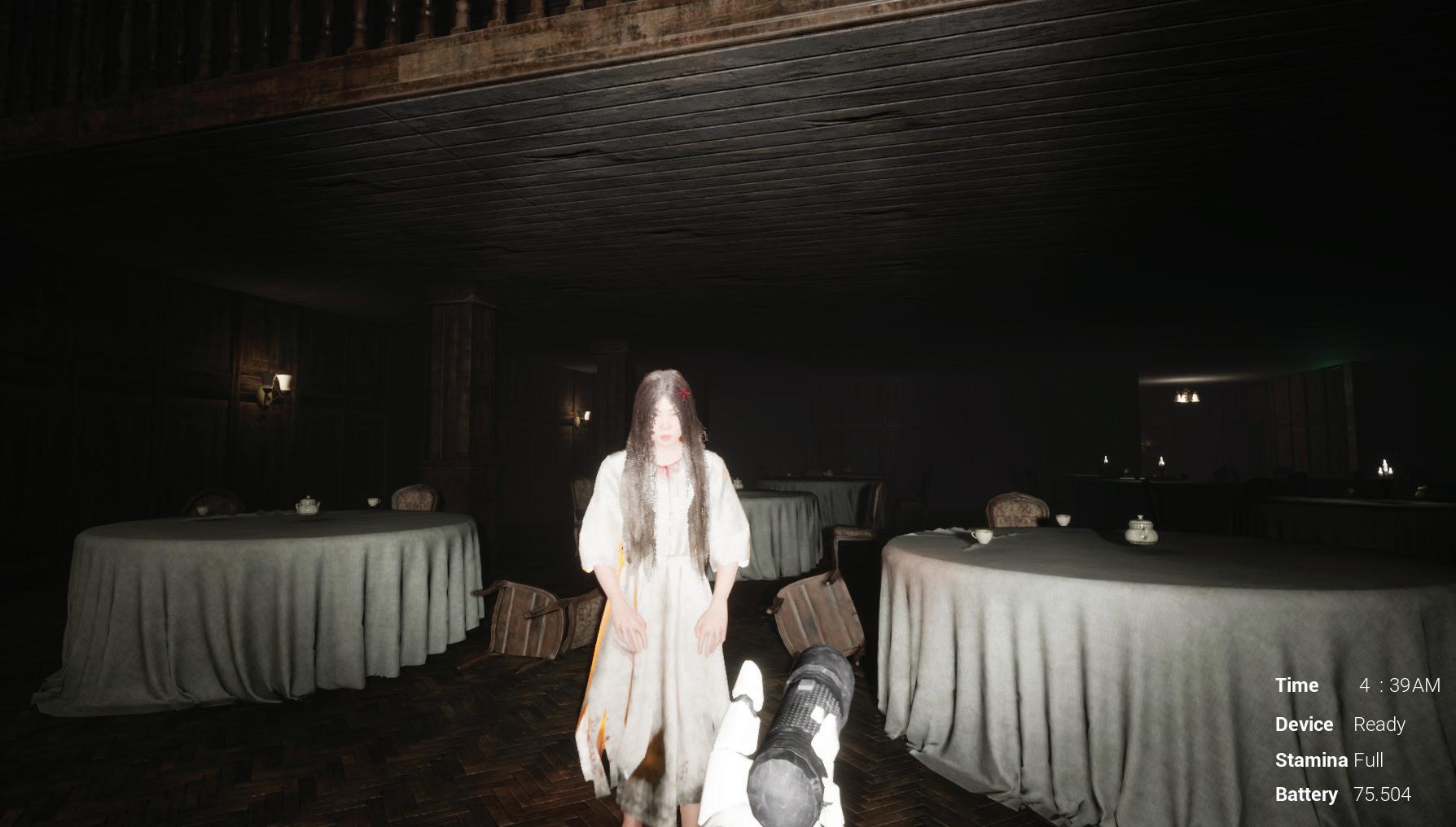
Cipher Room Yikun Peng
Cipher Room is a horror game that features the gameplay of action-adventure, strategy and puzzle solving. Sounds complicated right? You will enjoy this game by playing as a detective who is hired to find the missing secret code by fighting against a ghost and solving the hidden puzzle in a dark house. Now, be brave to explore this unknown place and have fun!
Video can be found here: https://youtu.be/QOuHN3ZPUtg
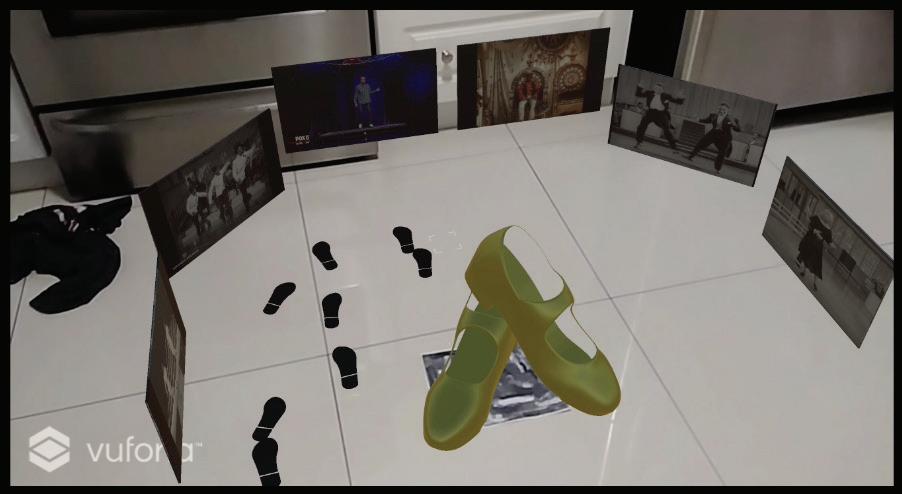
Augmented Environments
Adiola Palmer, Erik Fernandez, Kwame Kyei-Boateng, Jiaoxuan Hou
The tap shoes surrounded by tap dancing videos are generated when the device camera detects the AR marker which anchors these 3D objects. The project also utilizes Vuforia’s ground plane detection feature to generate footprints whenever the user taps the screen on a flat surface. Each footprint generated on a surface have slight variations in their angles to simulate vigorous dance patterns. You may also move around the models and generate the footprints around the space.
The idea is to eventually have the footprints lead people around the space, and perhaps be used as simple instructions for a tap dance routine. As people move through the space, there will be more black and white and colour videos showcasing the history of tap dancing through memorable performances. We would also play with the idea of old vs new and black and white vs color with the material and texture of the 3D model tap shoes, as well as a tapping animation and sound for the shoes.
The Visible Hand Kathryn Bower
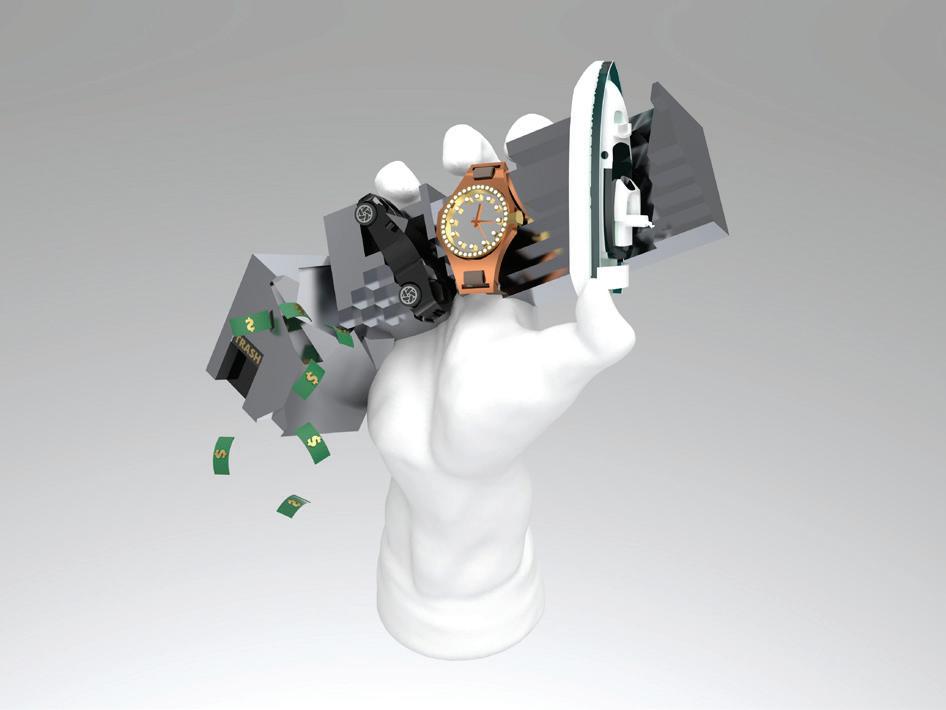
Adam Smith’s “invisible hand” economic theory, in addition to market balancing, suggested that the rich will redistribute their wealth among the lower classes, allowing everyone equal access to resources, as if guided by a hand. In the modern day and age such a suggestion is laughable. It is no secret that the rich, despite making up a tiny fraction of the population, possess most of the world’s wealth. We live in a world where all our decisions must be made based on what will make us the most money. “Do what you love and you’ll never work a day in your life” is a dead myth as people grapple with a nonexistent job market, and those lucky to obtain a job work a taxing amount of hours. Housing is unaffordable. Minimum wage is inadequate. Food costs are rising. In 2015, 736 million people lived in extreme poverty. Where is the so-called “invisible hand”?
With a 3D scanned model of a print of Auguste Rodin’s The Mighty Hand, The Visible Hand clutches a tower (modeled after Trump’s NYC building) made of luxury items only owned by the most wealthy. The tower breaks apart in the hand’s powerful grasp, bleeding the wealth that they failed to redistribute. In this scenario, it is not the invisible hand that is being employed, but rather the very much visible hand of the people. The remaining 99% who are sick and tired of receiving scraps.
The Grandmaster
Yikun Peng,Tianyang Zhan, Xinze Li, Zhuang Riyuan, Yingge Liu
The Grandmaster is a same-screen multiplayer action game that uses the theme of martial arts. The goal for players in this game is to try to win in specific rules of specific maps. The game involves a combat system, but the fighting in the Grandmaster may not be the only way to win. Players also need to focus on the map’s mechanism of a specific map to get advantage/win. The Grandmaster consists of providing positive feedback for all players in the game whether players’ skill of playing as the designing goal. That means elements of randomness, information hiding and low-level punishment for losing.
Video: https://youtu.be/XIUYIqvapNE
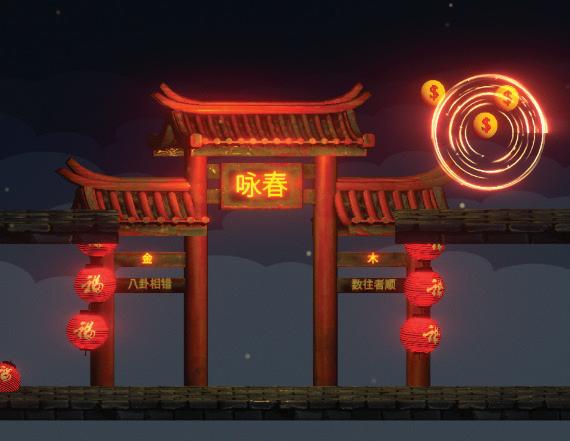
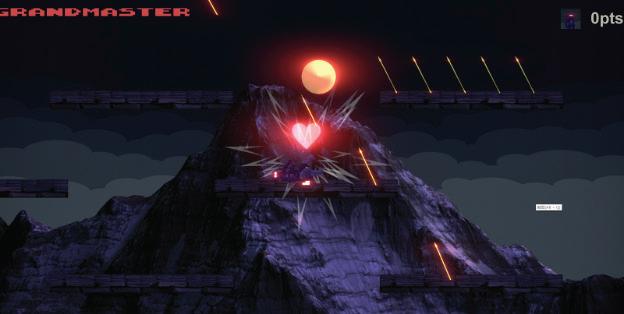
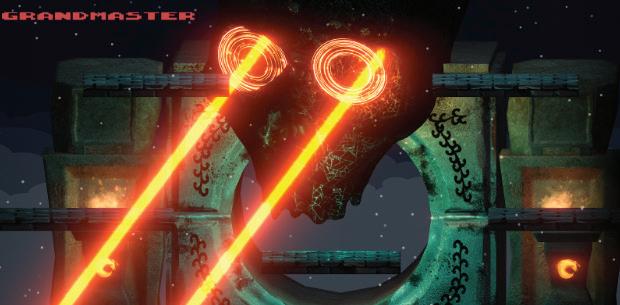
Meltdown
Brian Pimentel, Martin Harriott, Jorge de Oliveir, Yodhin Singh, Aylin Tamer, Riggy El-Shebiny

Meltdown is a fast-paced multiplayer 2.5D game in which goats race to the top of the mountain while facing obstacles such as snowballs being hit at them and rising water levels. There can be up to 8 players as the goats, and an additional 6 players -usually the audience- who can launch snowballs at them. The game takes place at a time where land is disappearing; the only safe place is at the peak. The goats cannot swim and so they must get to the top to survive. However there is a lot of snow on the mountain, and if the goats are not careful, they may get hit and fall off. Not to mention there is only room for 1 goat at the top; can any goat make it?
Link to video: https://www.youtube.com/watch?v=I6oYciDLss4
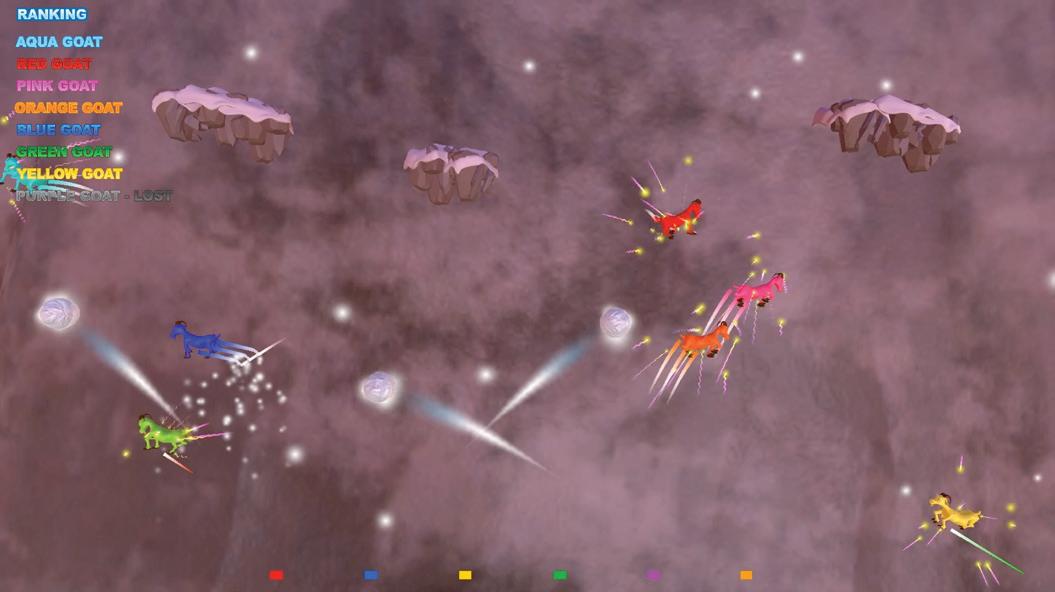
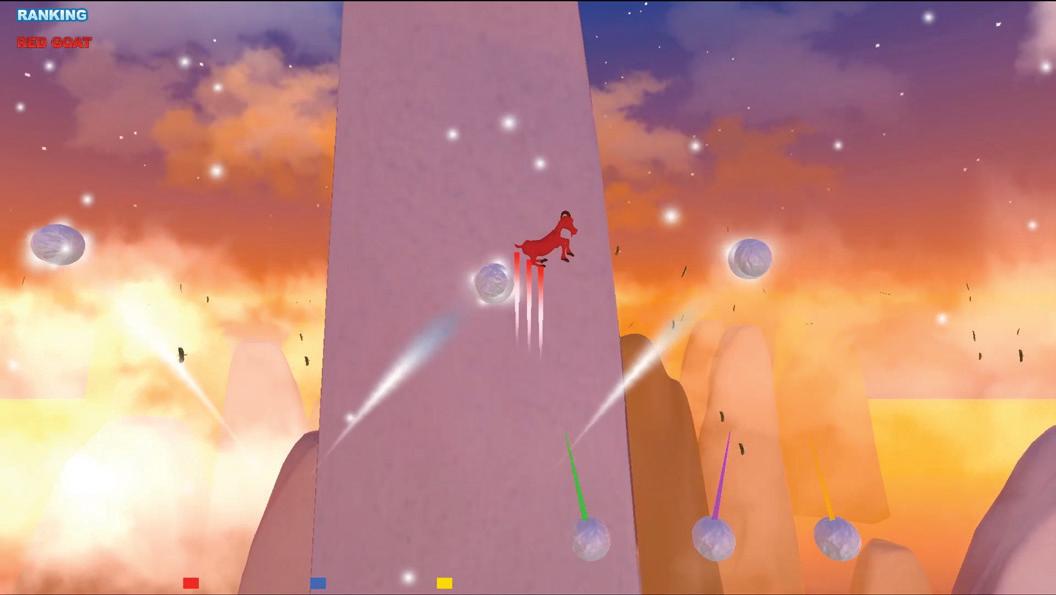
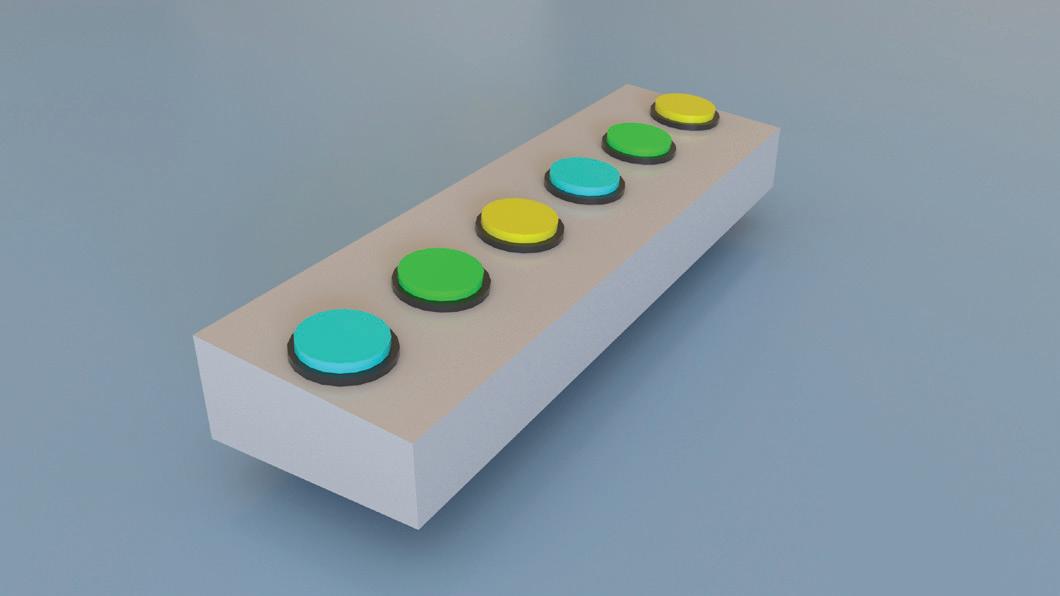
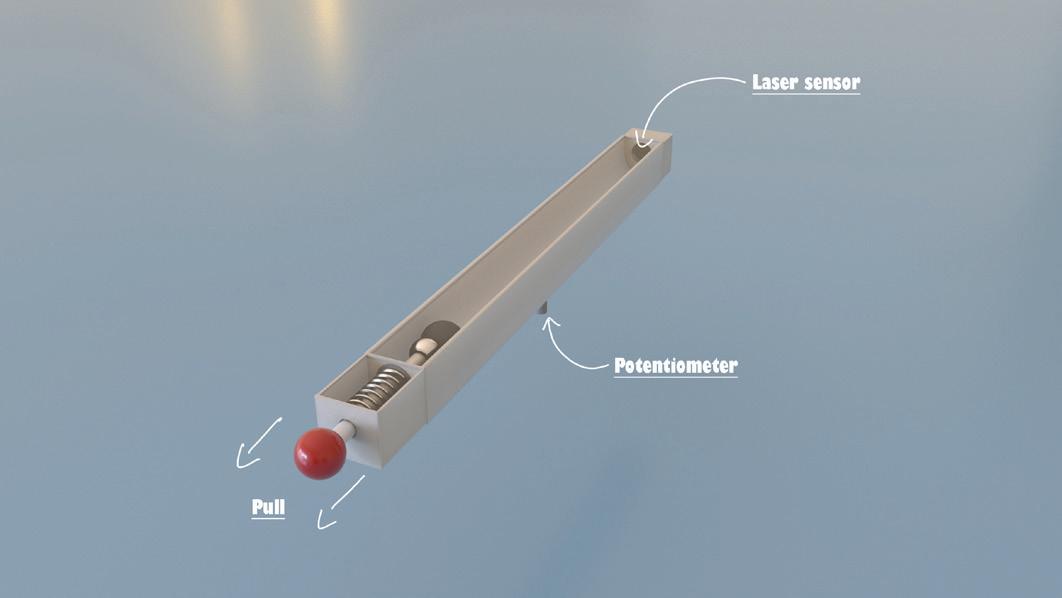
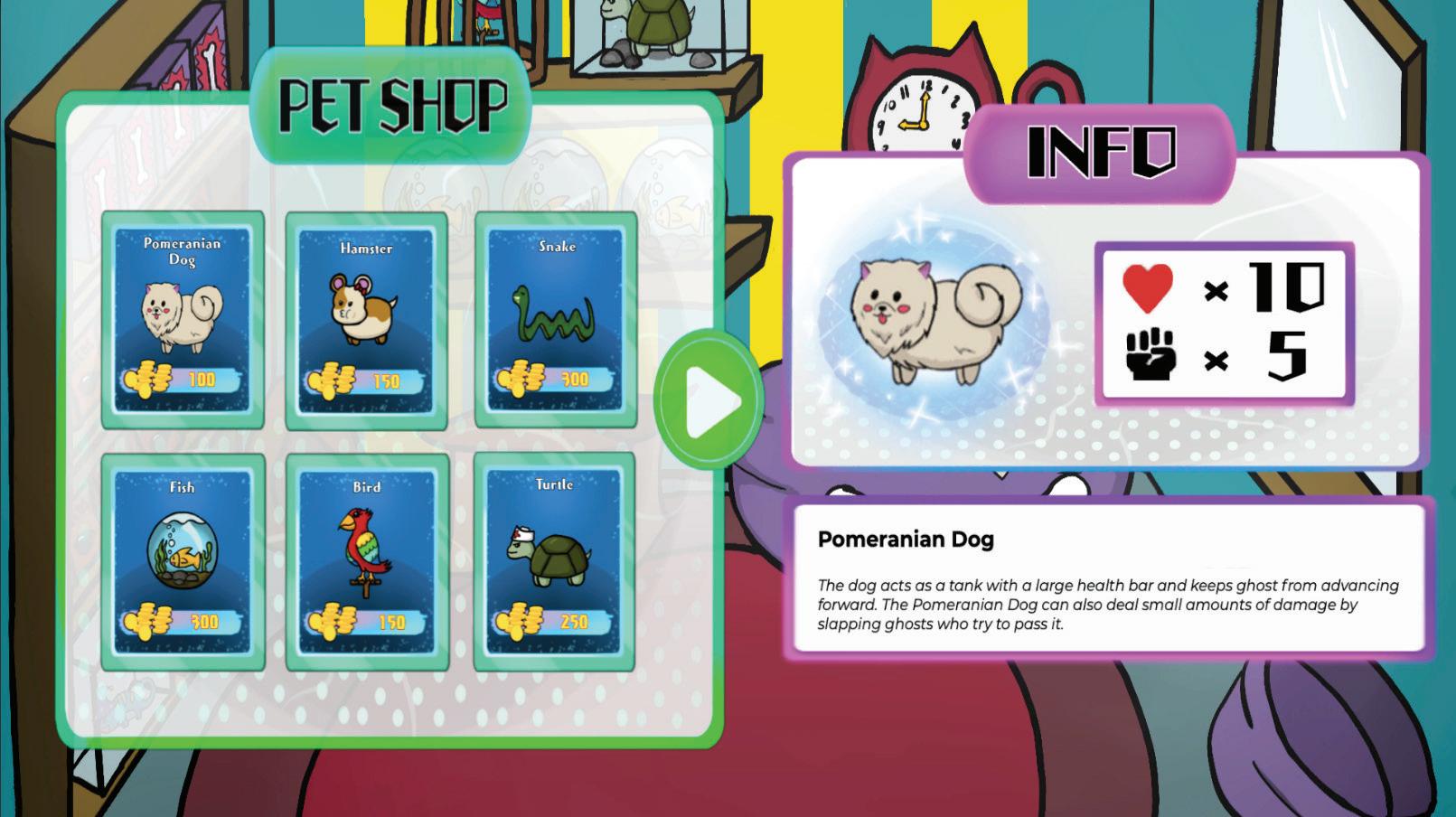
Pet Defense
Shiyi Du, Kristen Grinyer, Anny Ky, Dan Li, Tran Pham
The player controls a collection of pets who try to defend their human owner against ghosts in their home. Every night, ghosts sneak into the home with the goal of making their way up to the loft bedroom and devouring the owner. As the ghosts climb each level of the home, the pets try to defend their owner by attacking the ghosts. The pets must defend their owner until the sun rises.
The purpose of the game is to have players feel a sense of attachment to their virtual pets by allowing them to be directly responsible for their well-being. Unlike other tower defense games, the player is not given an abundance of each type of pet. Instead, they are only given one of each pet type and must take care of them.
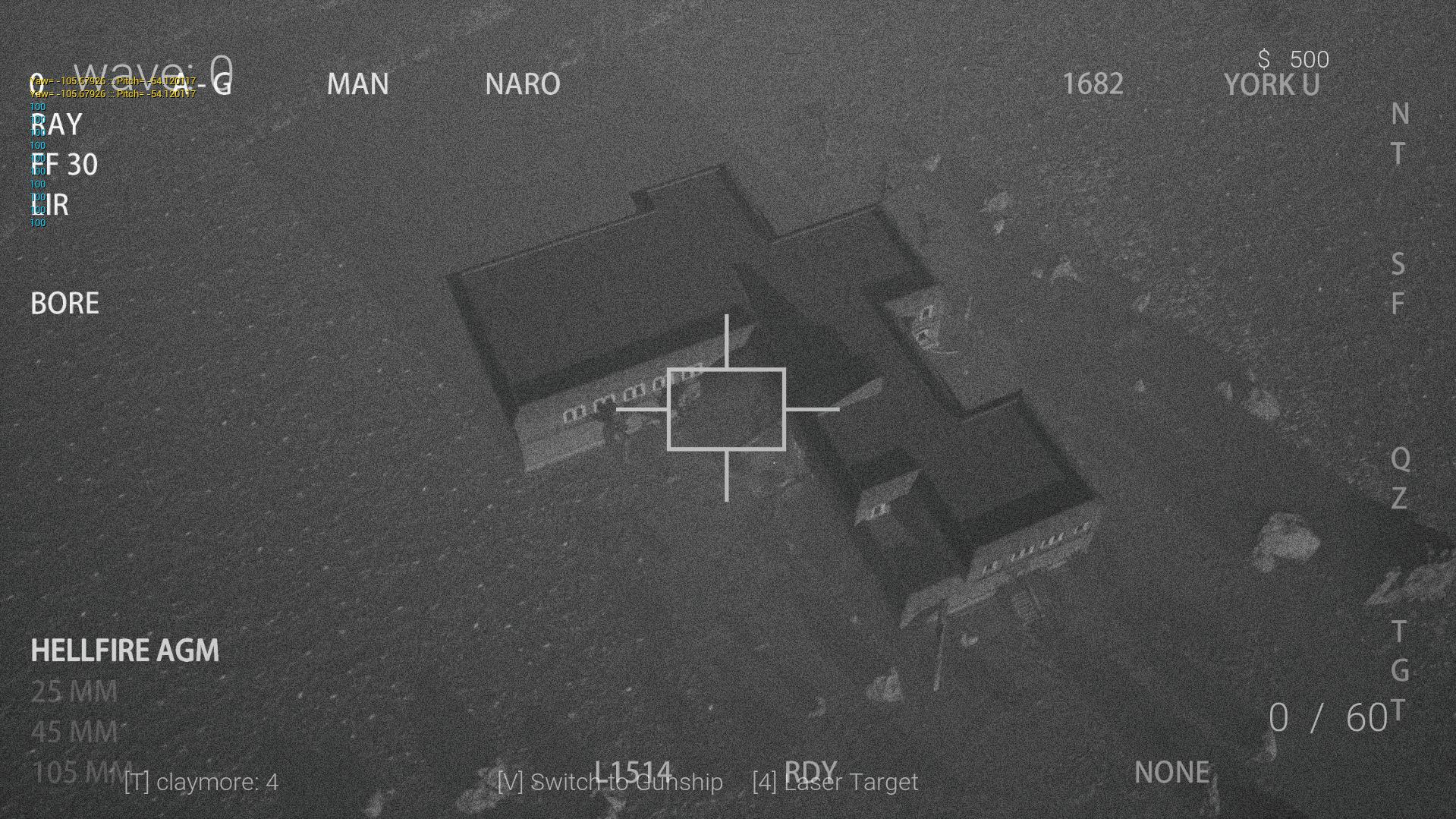
The Bunker
Han Ye, YiKun Peng, RiYuan Zhuang, LianMing Sun
Have you ever imagined how our world will look like after biochemical infection? What would you do if you are one of the survivors? “The Bunker” is a modern survival horror simulator. The story puts players into an abandoned school, where you need to defend waves of zombies and wait for rescue
The Purpose of the game is to have the player vent any emotions in the game. Players use guns to clear out the zombies that makes them scary. This is in itself a huge psychological satisfaction and the player sitting in front of the computer in the narrative mode of the game is actually an actor who plays the role of the game. Unlike other zombie game that only needs to kill the zombie with guns, our game requires the player to use strategies, such as airstrike and tower defense.
Escape.exe
Ryan Martin, Sachin Khargie , Joshua Tarantino
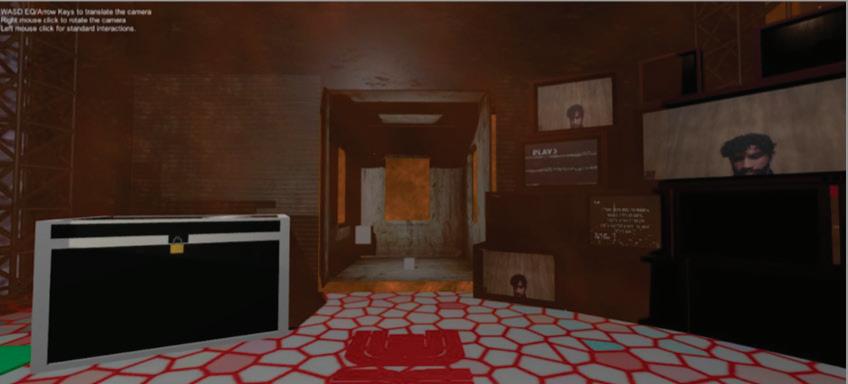
ESCAPE.EXE is a virtual reality game that allows people to have the experience of an escape room through the inside of their living room. An escape room is an adventure game that involves both the mental and the physical. Players have to solve riddles, in a sequence or other combinations using strategy. They’ll be able to solve these problems with a variety of hints and clues that will serve them as a guide to complete the puzzle. Players are usually put into a story setting or a theme, to immerse them into the escape room and give them a sense of purpose.
ESCAPE.EXE’s purpose was to provide the players that experience our game with an immersive experience using the HTC Vive device, and also SteamVR. It was designed to test a player’s ability to solve problems using our obstacles as a form of reference. We’ve achieved this by giving the players the ability to solve our puzzles and complete our game. We’ve also achieved our purpose by providing the player a space within virtual reality in which they can interact with many elements which make up the level of the surrounding player. Simple ways we’ve achieved that was by letting our players feel one with the world. Surrounding them with basic familiar objects they would interact with in their own home, a school environment, or on a daily basis. Props have become a significant role in the game through these means.
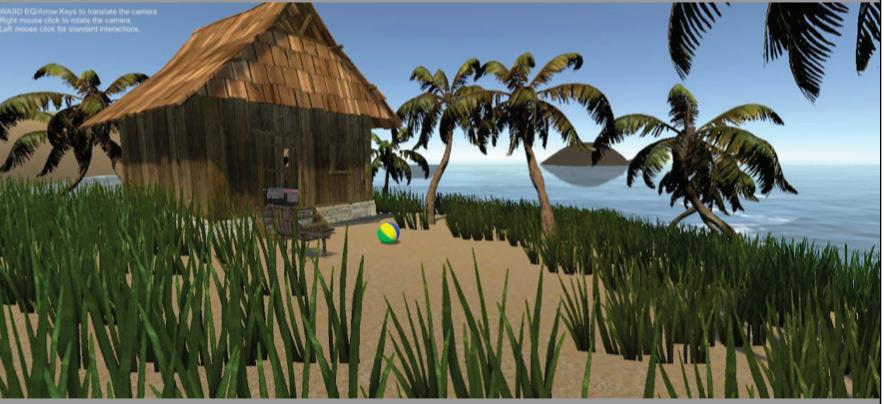
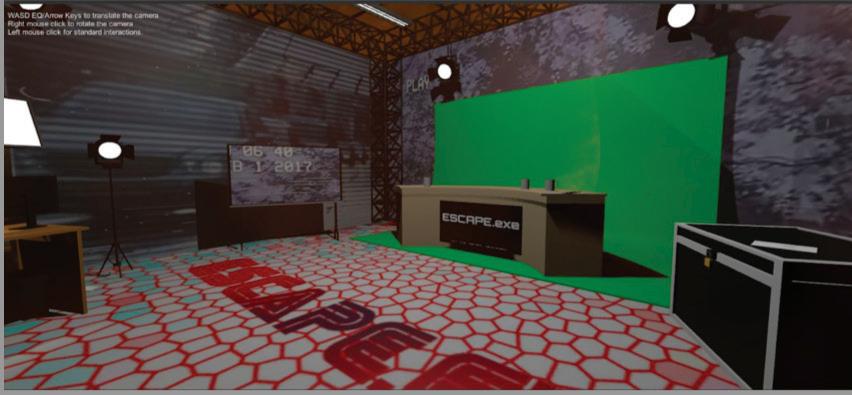
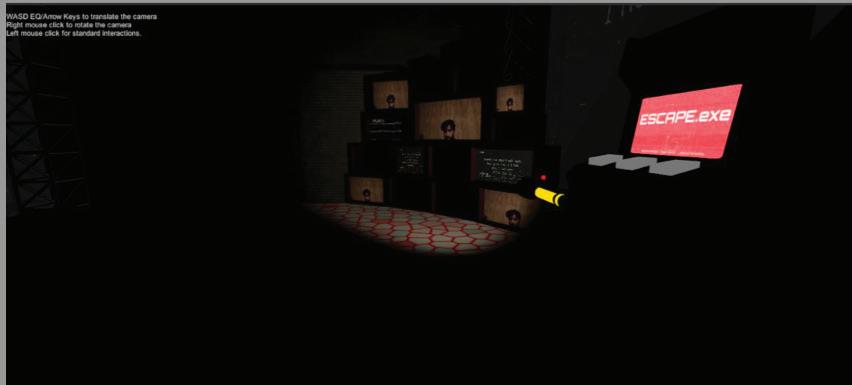
Face Swap
LianMing Sun, Riyuan Zhuang, Han Ye, Yikun Peng
The concept of our project is to create an interactive and multimedia experience that helps the user to understand the art of BianLian. Unlike the artworks that I just mentioned where the effects are static and pre-recorded, We aim to focus on the input of the user. The projected results are fully interactive and dynamic based on the input of the user, for example, the facial emotion and body gesture. This way the user will have a strong participation and connection to the virtual environment, hence better understanding what we are trying to express. The role of the user is not just an audience but also a performer. We will use the iPhone’s face recognition work to obtain the user’s facial expression information and then transmit it to unity on the computer. Unity will use the data to determine what emotions are expressed in the user’s facial expressions, thus corresponding to the same facial expressions (which we summarized in advance, such as happy, angry, sad, etc.). Our masks are arranged in a three-by-three matrix, and in order, the first user’s expression will be saved to the first mask, and so on. Therefore, later users can not only interact with their own facial expressions, but also see the data experience of previous users.
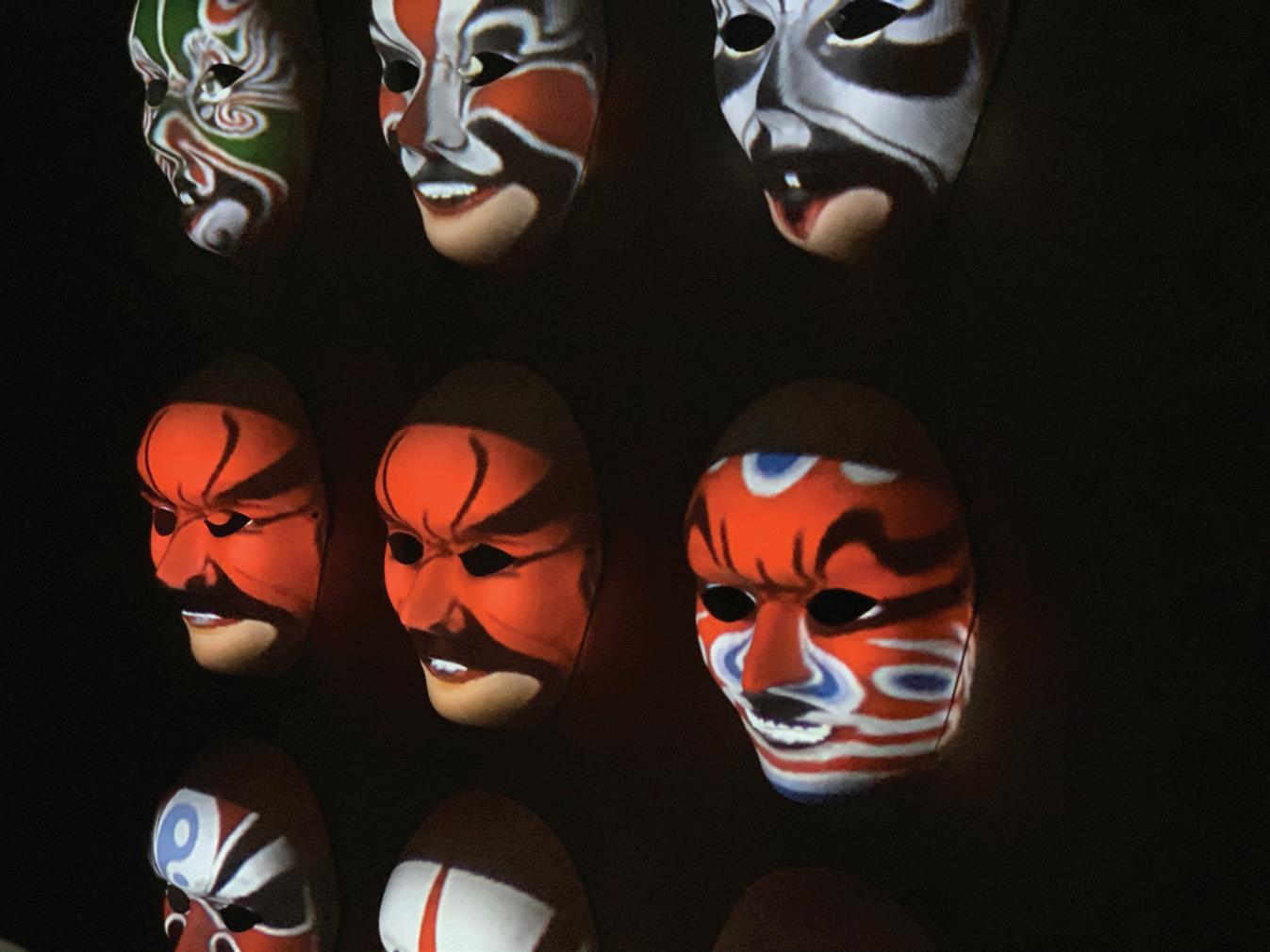
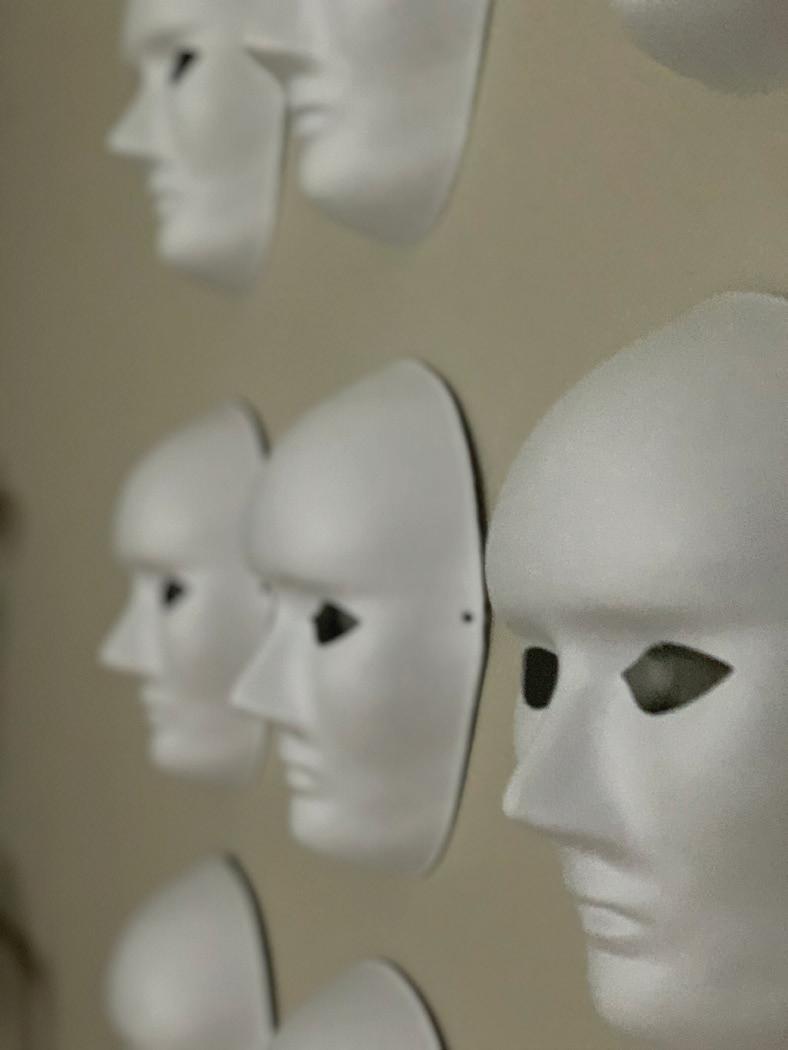
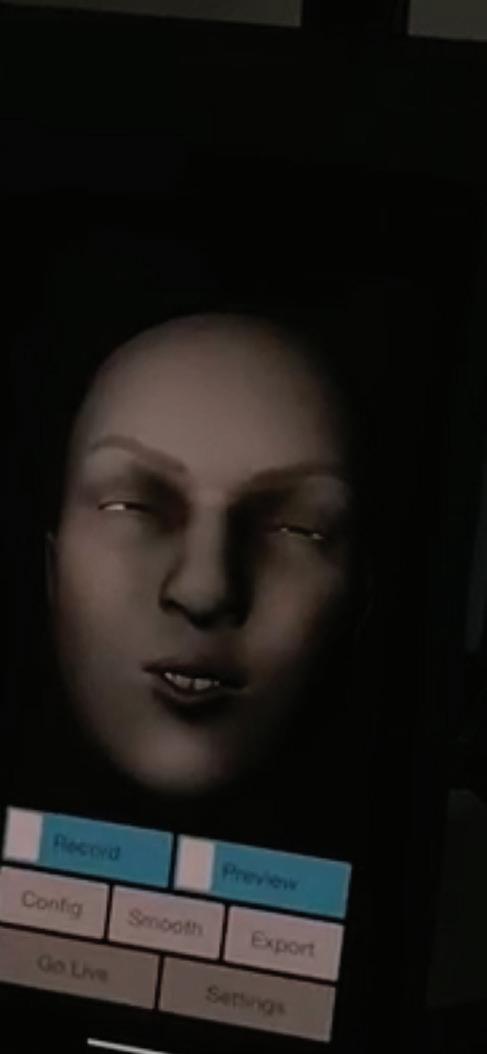
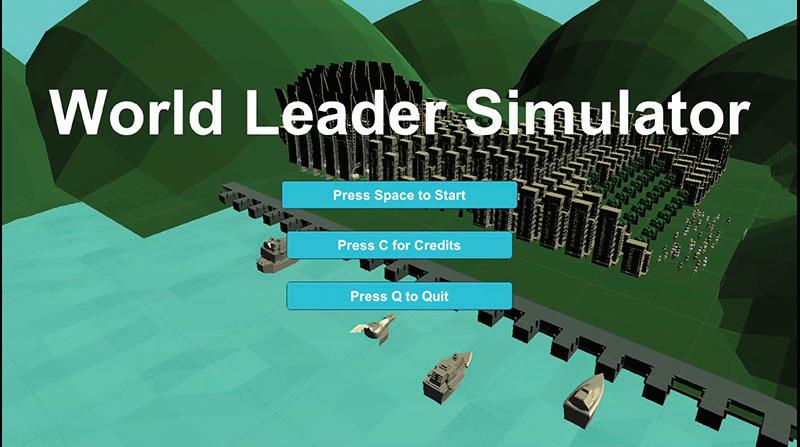
World Leader Simulator
Kristen Grinyer, Dan Li, Jingliang Sun, Kyra Younan
The project is a world leader simulator game that focuses on the current Canadian political climate and policies of major political parties in the country, specifically the Liberal, NDP and Conservative parties from the most recent 2019 election. The game is a branching narrative/choicebased game where players are told they have to make important political decisions as the leader of a futuristic sci-fi country. It was important to create a fully immersive experience not only through the game but with the surrounding environment as well. This is done through physical objects and props allowing players to sit at an office desk with objects that interact with the game such as physical buttons, stat bars, an emergency alarm and a printer. Players are presented with multiple dilemmas with a binary choice that they choose by pressing a button. These choices impact their country in different ways through four specific stats: the environment, world relations, wealth, and happiness. The results of these decisions are displayed through a procedurally generated city outside an office window where the player is located, as well as physical components that
display the changes in the country’s four stats. The environmental impact is shown through the loss of green space, world relations through the amount of generated boats that represent international trade, wealth through the types of generated buildings, and happiness through the amount and type of generated civilians and sound effects.
The problems that the country faces are based on real-world political and social issues from the 2019 federal election, with each choice being based on a policy from at least one of the three major Canadian parties. These are presented without the real-life connections to the players throughout the game. Their answers are secretly recorded to keep track of which political party their choices most align with. In the end, players are able to see a visual representation of their choices throughout the changing city, LED bars, and a tower alarm light. They will receive a physical print out that shows them their country’s name, final stats outcome and which party their choices most align with. The receipt leaves users with a physical reminder of their experience while also provoking players to think deeply about their decisions, the effects they had, and how this is mirrored in Canada and the world.
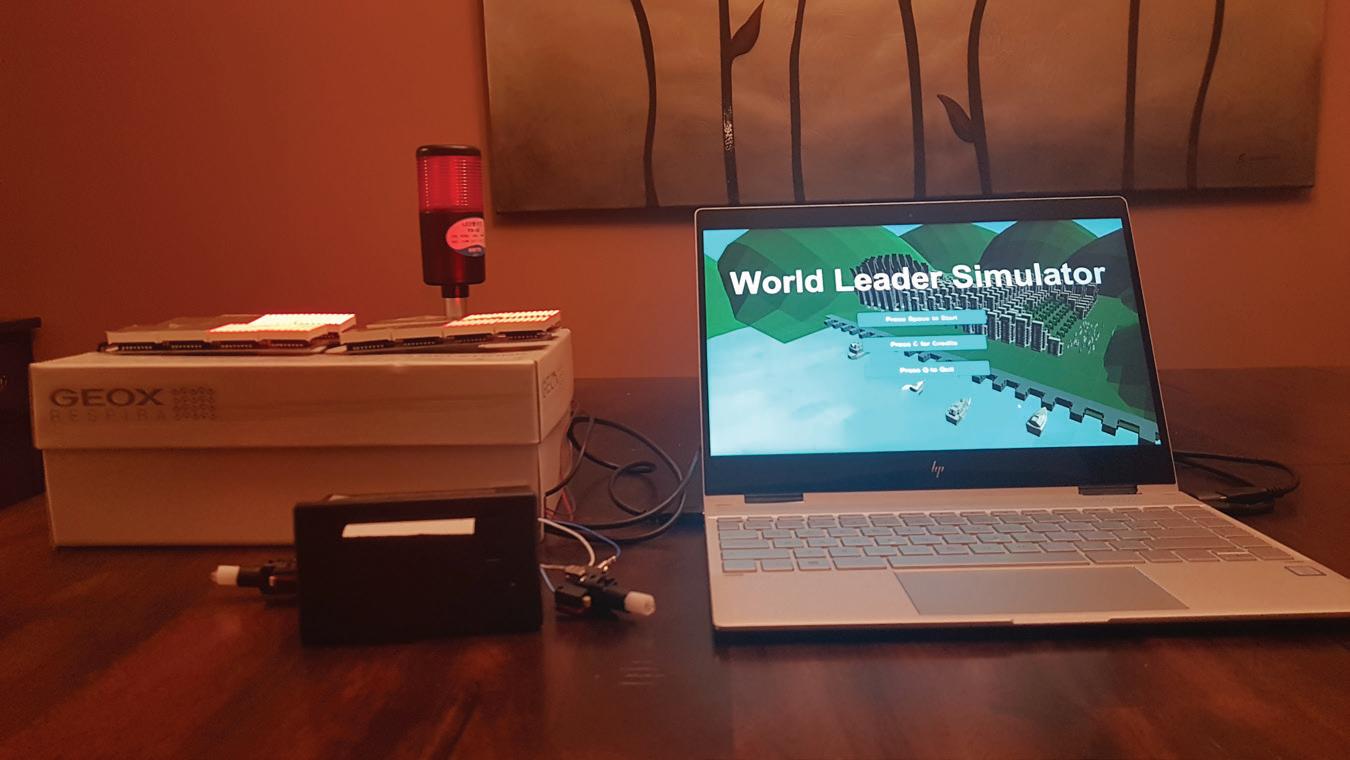
Visionary Frame
Dongcheng Wu, Xiangyue Meng, Jiaqi Yao, Tingwei Zhang
Visionary frame is inspired by ancient Chinese myths and legends called “Fairy in the painting”. In Ancient China, people believed that celestial beings were powerful and always secretly protecting humans. In this interactive artwork, it demonstrates the existence of the visionary world by combining the form of technology and art. Audience can see their visional body in the frame and they can interact with the invisible energy by touching them.
In our project Visionary frame, there are three main goals. First, we want to experiment project video/picture on irregular media such as water, glasses, plastic and fog. The refraction and reflection of the light in different media could create various visual effects. In this project we focus on project video on thick fog to create a blurry mystery visual effect. Second goal is to learn how to use depth map and skeleton data capture by Kinect2 to build human shape particle system in Unity. This project is also a musical experiment of how to create mystery feeling sound by randomly combining some certain notes. In this paper we are gonna discuss how we gradually find and confirm the aesthetic style. Our purpose and how we overcome the difficulties we met in the technical parts and physical part.
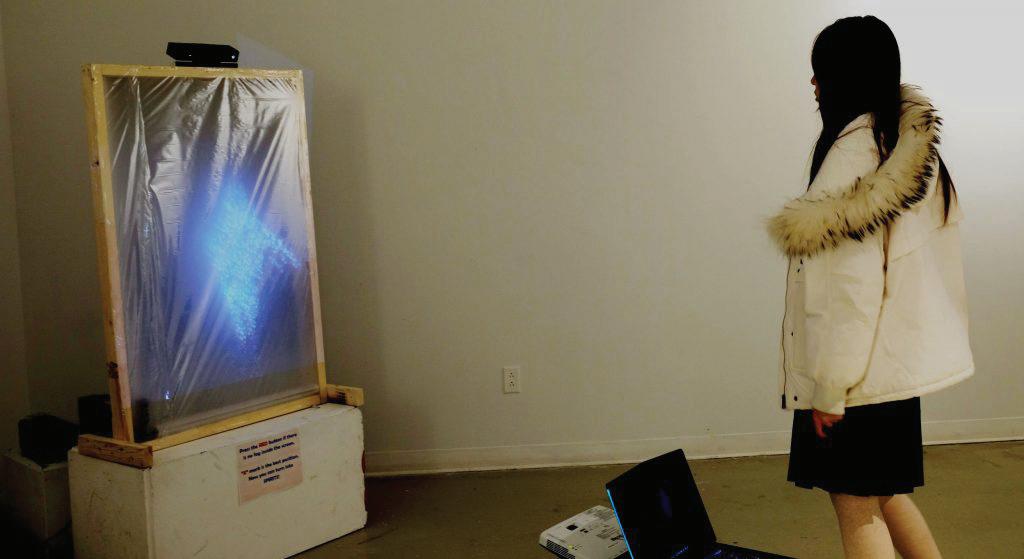
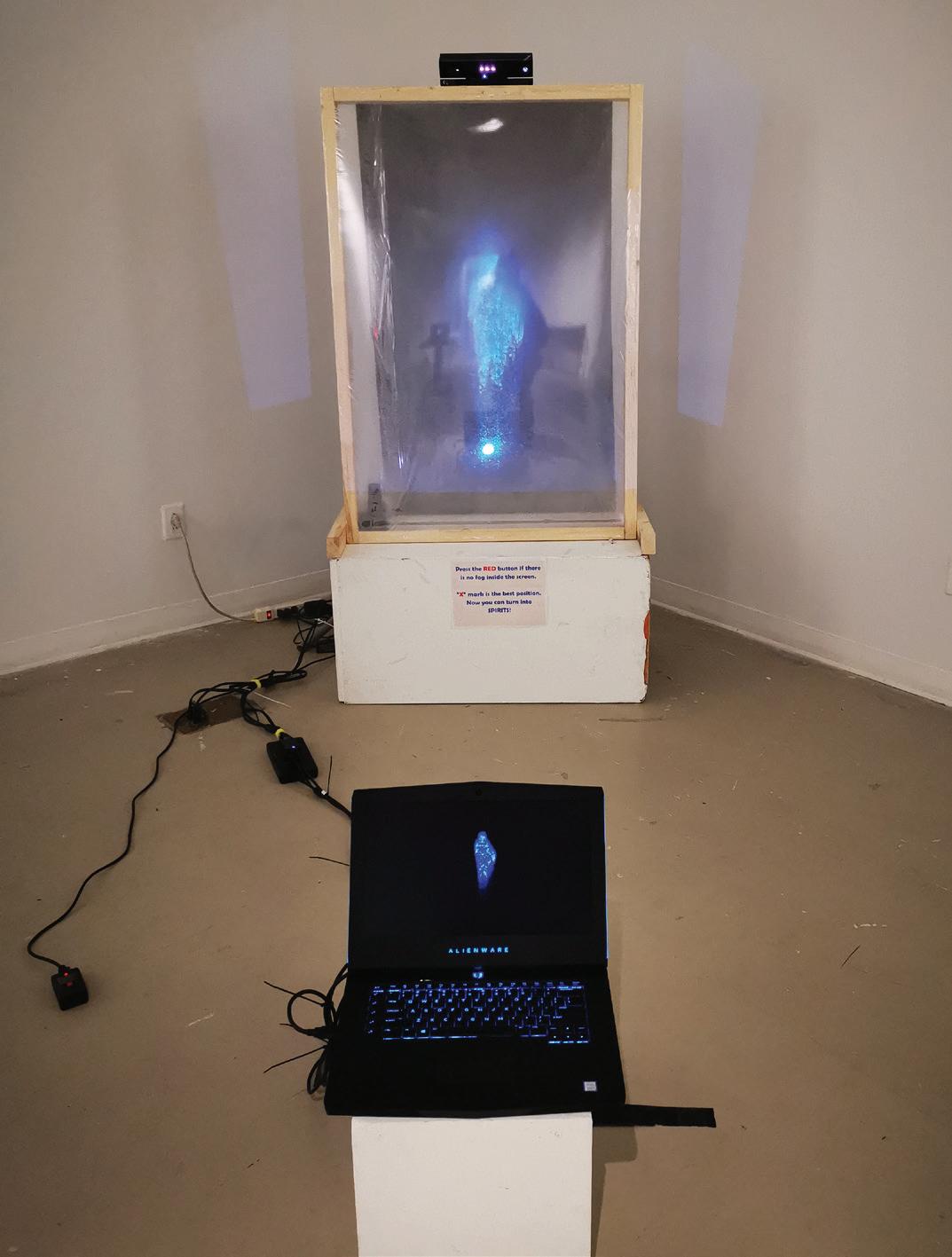
Explores embodied approaches to combining hardware, software and materials to create art works. Students will be introduced to the world of physical computing: combining simple computers (e.g. Arduino), sensors, LEDs, motors etc. in physical forms.
FA/DATT 2010 3.00 Physical Computing II
Builds on the material covered in Introduction to Physical Computing to explore new forms of engagement and interaction in specific areas including: wearable computing, wired and wireless communication, and instrument creation. Students will develop a larger work for public presentation.
DATT 2300 3.00 Game Development I
The course provides students with theory and concepts relating to the field of game design and development, along with practical exposure to the process of designing and developing non-digital and digital games.
Through the exploration of different game mechanics, concepts and perspectives that encompass the field of game design and development, students will learn how to design, develop games and test digital prototypes using an iterative process.
FA/DATT 2501 3.00 Introduction to 3D Animation
This course provides a foundation in 3D animation using the 3D modelling and animation software Maya. The course will provide a survey of various animation techniques and approaches with an emphasis on render time animation as it is used in 3D art, 3D animation, data visualization and games. Topics include the principles of animation, scene building, character animation, timeline based animation techniques, staging a scene using lighting, cameras and sound and the use of 3D graphics in simulation and visualization. Some animation techniques covered in the course are straight ahead action and pose-to-pose keyframing, rigging, motion paths, set driven keys, and particle and physic effects, Each class consists of a one hour lecture and two hours of lab practice to accomplish a combined theoretical and practical approach.
FA/DATT 3300 3.00 Game Mechanics
Explores the rules and procedures followed by players and games-more broadly and not limited to computer gamesthat are the building blocks that make up gameplay. Students look at the various aspects of game mechanics; what they are, how they can be formed, how they interact with each other, what values they transmit and topics relating to the application of game mechanics. Examines system dynamics, balancing luck and skill, cooperation and competition, in variety of gaming and non-gaming contexts. Students will prototype, test, and implement mechanics in games and learn how to visualize, simulate and operationalize game mechanics. Topics include: emergent gameplay, balancing game mechanics and level design, and scripted events vs. dynamic progression systems.
FA/DATT 3930 3.00 Screen-Based Fluid Interfaces
Looks beyond the vocabulary of the point-and-click gesture to fluid mouse gestures in interactive new media art. Fluid mouse gestures, those that involve reacting to movement, provide a vast array of possibilities to generate complex meaning.
FA/DATT 3940 3.00 Modelling for 3D Fabrication
Introduces students to the possibilities for creating digital objects using advanced 3D design software and 3D scanning technologies, and the related conceptual concerns.
FA/DATT 3701 6.00 Collaborative Project Development in Games
The entire class collaborates on the realization of one or two ambitious game projects. Students will work together as a development team by taking on roles where they focus on specific aspects of the project (such as Director, Designer, Artist, Programmer, Level Designer, Sound Designer, Publicity). The development team structure is modeled on teams used in large-scale project development within fields related to games that rely on multi-stakeholder collaboration and interdisciplinary research. Projects may incorporate partnerships with York-based Faculties, Departments, or research teams depending on the focus of the project. The nature of the project will vary from year to year, but will be a significant work in the field of games. The Instructor(s) will prepare a general description of the project(s) at the beginning of the course. The details of the project(s) will be developed as part of the class activities. As part of the project development and execution students will be expected to prepare presentations, posters, and a written paper. The culmination of this course will be a final presentation, which will be open to the public. In addition to group assignments, students are evaluated based on their individual contribution, teamwork, presentations, and other deliverables as appropriate.
FA/DATT 4300 3.00 Game Development II
Advanced topics in game development and implementation such as game engine techniques, game engine scripting, prototyping, player controls, and level design building on previous courses in game development and game mechanics. Advanced hands-on approach to the study and practice of games, gamification, and game play and their use in various applications, including video games, simulations, serious gaming, and art making contexts. Further explores new and cutting edge trends in gaming, such as in the areas of alt gaming, queer games, Not Games, and urban gaming where the potential and boundaries of games and game play are being challenged and tested.
LE/EECS 4700 Digital Media Project (a.k.a. Capstone)
This course involves the completion of a significant body of work in the area of Digital Media. The project will normally be a team project involving the development and analysis of a digital media work potentially having elements of interactivity, animation, 3-D graphics, and sound for example. The project will be presented at a public workshop towards the end of the year.
We would like to thank everyone who helped make this year in Digital Media Possible:
Professors, Computational Arts:
Mark-David Hosale, Michael Longford, Joel Ong, Yifat Shaik, Don Sinclair, Doug Van Nort, Graham Wakefield
Professors, Electrical Engineering and Computer Science:
Melanie Baljko, Michael S. Brown, Petros Faloutsos, Matthew Kyan, Scott MacKenzie, Vassilios Tzerpos
Guest Professors
Joe Hambleton, Dafydd Hughes, Roch Smith, Nadine Wettlaufer
Teaching Assistants
Gillian Blekkenhorst, Marcus Gordon, David Han, Ian Jarvis, Michael Palumbo, Dan Tapper, Sarah Vollmer
Technical Staff
Tim Hampton, Frank Tsonis
Administrative Staff
Melesa Beharry, Dawn Burns, Rose LeCoche, Patrick Legris, Joy Ramond
Thank you to our students, including the Digital Media Students Association.
LINKS
Computational Arts, AMPD, York https://computationalarts.ampd.yorku.ca/
Electrical Engineering and Computer Science, Lassonde, York http://eecs.lassonde.yorku.ca/
Digital Media Students Association http://dmstudents.ca/
Toronto Media Arts Centre https://www.tomediaarts.org/
Interaccess https://interaccess.org/
See current and past works by Digital Media Students in our online gallery: http://dmgallery.apps01.yorku.ca/

